Wetland&Science Practice
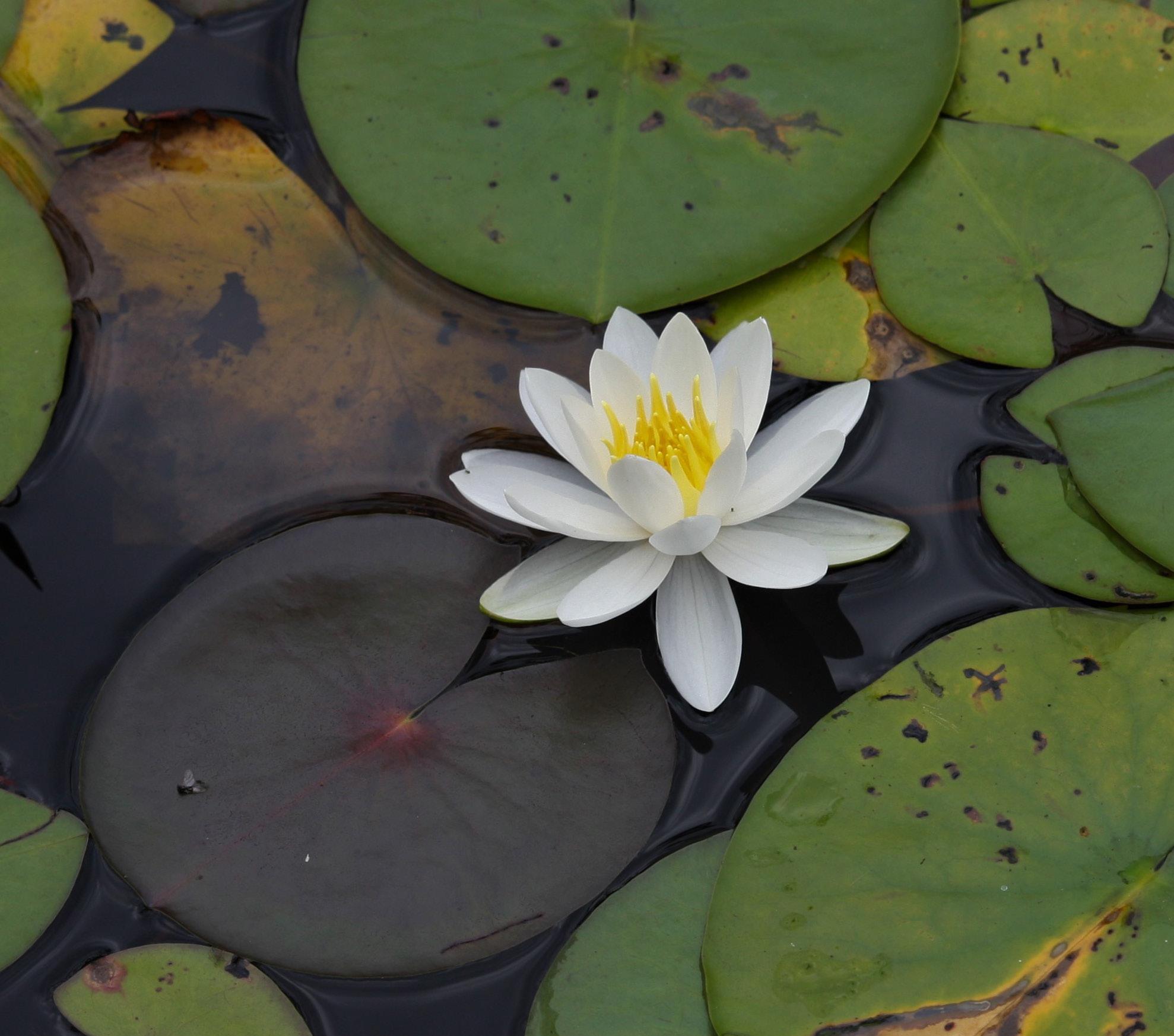
ISSN: 1943-6254
published by the Society of Wetland Scientists Vol. 41, No. 1 January 2023
Tiner WSP Editor
As I write this, winter is knocking at my door. The leaves are down from most of our deciduous trees. Considerable rain since Thanksgiving has filled the vernal pools that were dry for months – the eggs laid by marbled salamander eggs in late summer and fall should have hatched. Our first snowfall arrived in mid-November –only a couple of inches…not like the 6 feet of snow that Buffalo received. It won’t be long now until we have a snowstorm that will require driveway plowing. The Farmers Almanac says we’re due for a cold winter. I wonder if my winter botany short course will get delayed due to severe cold as it was a few years ago. Too cold to go out in the field (subzero with wind chill) … we simply rescheduled for a week or two later.
By the time you read this, another year will have passed and the year 2023 has arrived. I’m looking forward to our annual meeting in Spokane and to meeting up with SWS colleagues (sorry to have missed the Grand Rapids event). During the coming year, we’ve invited wetlanders working in Latin American and Caribbean wetlands to prepare articles for our 3rd special issue devoted to informing readers about wetland activities in these regions (see announcement herein). Tatiana Lobato de Magalhães again will be coordinating this effort, thanks Tatiana! I’m also looking forward to another year of virtually Covid-free travel (keeping fingers crossed on this one) for teaching and pleasure. In 2023, we’ll also hear what the US Supreme Court has to say about US EPA’s jurisdiction over wetlands
and whether their authority will be limited by the Court (for the latest information on wetland policies, follow the National Association of Wetland Managers at: https://www. nawm.org/). On December 30, 2022, EPA issued a news release on their current interpretation of "waters of the United States" (see p. 26).
Besides the latest SWS news including announcements on our upcoming annual meeting and other wetland news, you’ll find in this issue another article written by Arnold van der Valk about scientists who made significant contributions to wetland science. I’m so grateful that Arnold spends time doing this, not only for WSP, but for acknowledging scientists instrumental in building the foundation for wetland science. It’s been a pleasure to read his manuscripts. We also have an article highlighting one of our designated Wetlands of Distinction – in this case – Great Meadows National Wildlife Refuge, written by Roy Messaros. I know this Massachusetts wetland well as I have used it as a site for teaching freshwater wetland plant identification. Also included in this issue are abstracts from 6 of the 12 students who received research grants this year (the others will be presented in our April issue). The last major contribution to this issue - Notes from the Field - recounts my observations of wetlands during the past few months.

We welcome contributions to WSP. Readers would like to hear about the projects you are working on or the kinds of wetlands you investigate or simply enjoy visiting. If interested in contributing, just send me a message at ralphtiner83@gmail.com
Happy Swamping.
FROM THE EDITOR'S DESK 1 Wetland Science & Practice January 2023
Ralph
CONTENTS
Vol. 41, No. 1 January 2023 ISSN: 1943-6254 1 / From The Editor's Desk 3 / President's Address 4 / SWS Webinar Series 4 / SWS News 5 / Student Research Award Abstracts 7 / Guidelines for Tributes to Desceased Wetlanders 8 / SWS 2023 Annual Meeting Information 10 / Articles 21 / Notes From the Field 26 / Wetland Practice 27 / Wetlands in the News 28 / Wetland Bookshelf 28 / What's New in the SWS Journal- Wetlands 29 / WSP Submission Guidelines 30 / 2023 Advertising Prospectus
ARTICLES: 10 / Beginnings of Wetland Science in Britain: Agnes Arber and William H. Pearsall Arnold van der Valk 19 / Great Meadows National Wildlife Refuge, Massachusetts, USA: A Wetland of Distinction
Roy Messaros
COVER PHOTO: White Water Lily (Nymphaea odorata) – one of the most common aquatic plants in North America ranging from Canada to Mexico. (Photo by Ralph Tiner)
SOCIETY OF WETLAND SCIENTISTS 7918 JONES BRANCH DR., STE 300, MCLEAN, VA 22102 (608) 310-7855 WWW.SWS.ORG
Note to Readers: All State-of-the-Science reports are peer reviewed, with anonymity to reviewers.
Wetland&Science Practice
PRESIDENT / William Kleindl, Ph.D.
PRESIDENT-ELECT / Susan Galatowitsch, Ph.D. IMMEDIATE PAST PRESIDENT / Gregory Noe, Ph.D.
SECRETARY GENERAL / Leandra Cleveland, PWS
TREASURER / Lori Sutter, Ph.D.
EXECUTIVE DIRECTOR / Erin Berggren, CAE
DIGITAL MARKETING SPECIALIST / Moriah Meeks



WETLAND SCIENCE & PRACTICE EDITOR / Ralph Tiner, PWS Emeritus
CHAPTERS
ASIA / Wei-Ta Fang, Ph.D.
CANADA / Susan Glasauer, Ph.D. CENTRAL / Lindsey Postaski
CHINA / Xianguo Lyu
EUROPE / Matthew Simpson, PWS
INTERNATIONAL / Alanna Rebelo, Ph.D. and Tatiana Lobato de Magalhães, Ph.D., PWS
MID-ATLANTIC / Adam Gailey, MS, PWS
NEW ENGLAND / Dwight Dunk, PWS
NORTH CENTRAL / Casey Judge, WPIT
OCEANIA / Maria Vandergragt
PACIFIC NORTHWEST / Josh Wozniak, PWS
ROCKY MOUNTAIN / Rebecca Pierce
SOUTH ATLANTIC / Richard Chinn
SOUTH CENTRAL / Jodie Murray Burns, PWS, MEd, MS WESTERN / Richard Beck, PWS, CPESC, CEP
SECTIONS
BIOGEOCHEMISTRY / Havalend Steinmuller, Ph.D. EDUCATION / Darold Batzer, Ph.D.
GLOBAL CHANGE ECOLOGY / Wei Wu, Ph.D. PEATLANDS / Bin Xu, Ph.D.
PUBLIC POLICY AND REGULATION / John Lowenthal, PWS
RAMSAR / Nicholas Davidson, Ph.D.
STUDENT / Deja Newton
WETLAND RESTORATION / Kurt Kowalski, Ph.D. WILDLIFE / Andy Nyman, Ph.D.
WOMEN IN WETLANDS / Rachel Schultz, Ph.D.
COMMITTEES
AWARDS / Amanda Nahlik, Ph.D.
EDUCATION AND OUTREACH / Jeffrey Matthews, Ph.D.
HUMAN DIVERSITY / Kwanza Johnson and Jacoby Carter, Ph.D. MEETINGS / Yvonne Vallette, PWS
MEMBERSHIP / Leandra Cleveland, PWS
PUBLICATIONS / Keith Edwards
WAYS & MEANS / Lori Sutter, Ph.D.
WETLANDS OF DISTINCTION / Roy Messaros, Ph.D., Steffanie Munguia and Jason Smith, PWS
REPRESENTATIVES
PCP / Christine VanZomeren
WETLANDS / Marinus Otte, Ph.D.
WETLAND SCIENCE & PRACTICE / Ralph Tiner, PWS Emeritus
ASWM / Jill Aspinwall
AIBS / Dennis Whigham, Ph.D.
William Kleindl, Ph.D. Montana State University SWS President
Fellow SWS Members, Every fall, along with Dr. Ric Hauer from UMMissoula, I have the pleasure of teaching a week-long class on assessing floodplain function for the U.S. Army Corps of Engineers (ACOE). The course runs twice, so we see about 60 folks from ACOE and a few other agencies. We start each week by asking about the breadth of their responsibilities and projects. We then spend the week in the beautiful floodplains of Montana and use that time to get to know them better. The number of ongoing projects where humans and waters interact astounded me. Yet, what impresses me most as I spend the week with these hard-working agents, is how much they deeply care about making decisions that are best for our aquatic ecosystems within the constraints of these projects.
As a researcher and consultant, I have interacted with engineers, ecologists, and regulatory agents throughout my career. The daily decisions practitioners make shape our wetlands, rivers, and floodplains well into the future. Most of these decisions are made within severe constraints of time, money, objectives, and regulations. But these

constraints inspire creativity that alters design to avoid or minimize impacts to water, and inspires innovation in ecological restoration practices that compensate for unavoidable impacts. Most engineers and consultants work very hard to achieve these solutions and have an effective working relationship with the regulatory agents that can help guide them. As innovations become practice, other agencies codify those approaches, track the status and trends of our waters as these approaches are implemented, and recommend improvements over time. Through this fast-moving iterative effort, this suite of consultants, engineers, and regulatory agents has advanced the application of aquatic ecological practice in the United States and worldwide.
The best part of our International Society of Wetland Scientists is that we are a three-legged stool of researchers, consultants, and government workers. Most global wetlands, rivers, and floodplains operate within socioecological systems. Each SWS of the triumvirate brings a unique understanding to this system, and SWS creates a platform to share that understanding. Over the next few weeks, we will be accepting abstracts for our annual meeting in Spokane, WA (USA), and I would love to see many talks from practitioners. Our annual meetings are a wonderful place to learn about the cutting edge of our practice, and I look forward to it.
3 Wetland Science & Practice January 2023
PRESIDENT'S ADDRESS
ENGLISH:
February 16 | 1:00 PM ET
Higman Barge Removal Wetland Restoration
Adam Constantin and Christine Magers
March 16 | 1:00 PM ET
Corps of Engineers Recently Released Automated Data Sheets for performing wetland delineations: Insights into the ADS development by the COE and use by the public.
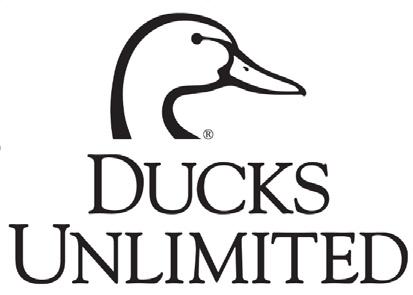
Jacob Berkowitz
SPANISH:
March 15 | 1:00 PM ET
Atlas of Bofedales in the Southern Tropical Andes Dr. Gabriel Zeballos Castellón
Visit the SWS Event Calendar for more details and for future webinars dates.
THANK YOU TO OUR 2023 WEBINAR
SERIES SPONSORS

Latin America and Caribbean Wetlands

Issue Planned for Wetland Science & Practice

Wetland Science & Practice (WSP, Society of Wetland Scientists' e-publication) is planning a third issue focused on Latin America and Caribbean (LAC) wetlands. The purpose is to provide readers with an update of current research, restoration and conservation activities and concerns involving the region’s wetlands. Articles on the natural history of wetland fauna or flora are also of interest as well as profiles of individual wetlands of national or local significance.
We are also launching a SWS LAC photos contest! Photographs of wetland animals, plants or scenes are also sought for consideration for display in the Notes from the Field section; please include an appropriate description for the caption (wetland type, species names, locality, country, year, author) and submit your photo here https://fs24.formsite.com/SWS2015/3gtdudkesv/index.html.
The deadline for articles and photos submissions is October 1, 2023. Please review WSP publication guidelines. If you have any questions feel free to contact Tatiana Lobato de Magalhães, Special Issue Coordinator (tatilobato@gmail.com), or Ralph Tiner, WSP Editor (ralphtiner83@gmail.com).
Wetland Science & Practice January 2023 4
SWS NEWS
STUDENT RESEARCH GRANTS FOR 2022
Every year the Society for Wetland Scientists (SWS) conducts a grant competition for students seeking financial assistance for their wetland research projects. The objective of this program is to develop and encourage wetland science as a distinct discipline by providing support in student education, curriculum development and research. To support this goal, SWS offers partial funding of wetland-related research conducted by undergraduate and graduate students from an accredited college or university worldwide. These grants are intended to aid student's costs of travel (including room and board) for field investigations and to help cover costs of expendable materials and supplies required in the execution of the proposed research. Information on the program can be found online at https:// www.sws.org/student-research-grants/. Questions about the program should be directed to David Bailey, Chair of the SWS Student Research Grants Subcommittee at David.E.Bailey2@usace.army.mil
The program typically receives between 20 and 40 applications per year, with funding offered to 12 students each cycle. Thirteen students applied for SWS Student Research Grants in 2022. In this issue, we provide abstracts for 6 of 12 awardees while abstracts from the others will be published in our next issue (April 2023). We congratulate all awardees and look forward to learning more about their research in the future.
CONTAMINANT ANALYSIS OF COASTAL MANGROVE ECOSYSTEMS ACROSS DIFFERENT ENVIRONMENTAL CONDITIONS IN HAWAII AND FLORIDA
points of urbanization and mangrove presence. The goal of the Hawaiian survey will be to determine the impact mangrove presence has on accumulation of contaminants in the coastal compartment. From each of these sites we will take core samples, tissue samples and pore water samples and examine organic pollutant, and microplastic content. The main contaminants to be targeted are chlorpyrifos and atrazine, which are legal in Florida but in the process of being phased of use in Hawaii. We will also determine if mangrove removal causes the contaminants to be flushed from the sediment. The methodology will be replicated at three sites in Florida: a natural setting site located along the southwest coastline, an urban site along the coast of Miami, and an agricultural site located within Biscayne National Park in the more agricultural dominated region south of Miami. We will work closely with local scientists as well as seek council from the native community.
ASSESSING SURVIVORSHIP OF PLANTED AND SEEDED SPECIES WITHIN RESTORED GREAT LAKES COASTAL WETLANDS
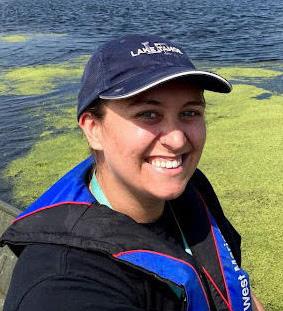
Rene Belleville, Brockport University, Brockport, NY Rbell3@brockport.edu
Geoff
 Szafranski,
Szafranski,
Portland State University, Portland, OR gszaf2@pdx.edu
Mangrove forest is an intercoastal ecosystem that provides many important ecosystems services, such as storage and remediation of pollutants. This ability to sequester pollutants is important as coastlines are subject to a tremendous amount of urbanization and development, and these barriers help prevent contaminants from entering the marine environment. The overall body of research on this topic however, particularly in locations where mangrove forest is considered non-native, is still fairly small. To better understand how mangrove sediment stores pollutants, surveys will be performed in two regions: Hawaii where mangroves are non-native, and South Florida where the native mangrove coastlines have not been extensively surveyed for contaminants. Multiple sites will be surveyed in Hawaii along the southern Molokai coastline at differing
Many coastal wetlands within the Great Lakes region have been altered by invasive hybrid cattail, Typha x glauca (Typha). To manage invasive Typha within the Braddock Bay Wildlife Management Area located in Greece, NY, ecological restorations were carried out at Braddock Bay, Buttonwood Creek, Buck Pond, and Cranberry Pond. These large-scale restorations each included excavation creating channels and potholes within dense Typha stands, creation of mound spoils along potholes and channels, and seeding and planting of a variety of emergent and sedge/ grass species on mounds. The goal of my research is to determine survivorship of seeded and planted species following wetland restorations as well as the best method of practice for seeding/planting to ensure highest survivorship rates among seeded and planted species to better create an alternative stable state within these ecosystems. Vegetative data will be collected from mound habitats in previously restored marshes to determine long-term survivorship of seeded and planted species. Calamagrostis canadensis and Carex lacustris were chosen as study organisms due to their significance in sedge-grass meadows in the Great Lakes. Using a randomized plot design, replicated treatment plots (2 x 2m) were set up within mound habitats in the newly restored (2020) marsh at Cranberry Pond. Treatments include plots that were seeded in late fall, seeded and then covered with hay in late fall (they will be planted with plugs in the spring), and control plots that will not be manipulated.
5 Wetland Science & Practice January 2023
MAPPING, IDENTIFICATION, AND CONSERVATION OF VERNAL POOL CHARACTERISTICS ACROSS NATIONAL PARKS IN THE GREAT LAKES REGION

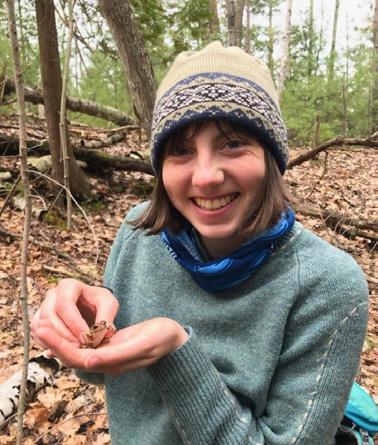
Samantha Kurkowski, Michigan Technological University, Houghton, MI srkurkow@mtu.edu
Vernal pools are small, ephemeral wetlands that become inundated each spring and provide many ecosystem services to the surrounding upland forests. They also provide critical habitat to amphibians and invertebrates, as their temporary nature keeps them free of fish and reduces the populations of predators. In collaboration with our partners at the Michigan. Tech Research Institute (MTRI), we are mapping vernal pools throughout Great Lakes National Parks and collecting data on vernal pool characteristics through ground truthing efforts. We aim to collect descriptive baseline data on vernal pools in this largely understudied region of the United States. This information will be used to determine what forest and geomorphological characteristics are associated with vernal pool presence, as well as what pool characteristics provide the highest quality habitat for amphibians. We will then develop a classification system to describe which pools provide the highest quality amphibian habitat to landowners and help them prioritize areas for conservation efforts. Field work began last summer at Pictured Rocks, Sleeping Bear Dunes and Apostle Islands National Lakeshores. We are requesting funding to aid our field investigation this coming spring at Voyagers National Park, and we will be visiting Isle Royale National Park as well. This coming May, we will visit 3050 randomly selected pools from the map created by MTRI through remote sensing efforts. At each pool we will collect a wide variety of data on pool characteristics related to hydrology, soils, vegetation, geomorphology, and indicator species. These data will be analyzed using ANOVA tests and logistic regression to determine if there is variation in vernal pools across the Great Lakes Region and which characteristics contribute high quality amphibian habitat. These results will be used to group characteristics into classes and further test if these classes exhibit significant differences in the probability of indicator species presence. Collecting data from several parks allows us to ensure that our classification system can be used throughout the extent of the Western Great Lakes. Preliminary results reveal that the overstory species composition of the surrounding forest may be the main driving factor in whether vernal pools support amphibian populations.
IMPACTS OF CLIMATE AND LAND USE CHANGES ON THE HYDROPOWER POTENTIALS OF THE BAGRE DAM, BURKINA, FASO

Gnibga Issoufou Yangouliba, University of Abomey Calavi, Benin yangouliba.g@edu.wascal.org
Hydropower is one of the largest renewable electricity sources and plays an essential role in the reduction of greenhouse gas emissions. In Africa, hydropower accounts only for 15% of its total electricity and half of Africans do not have access to electricity. In West Africa, the population is expected to reach 1.5 billion inhabitants in 2070 and more than 50 hydropower projects are currently under construction to cope with this situation. In Burkina Faso, more than 80% of the population do not have access to electricity although the country has five hydropower dams. One of the strategies planned to supply the electricity demand and future needs as well as to reduce greenhouse gas emissions is based on continuation of hydropower dam building. However, it has been proved that climate change as well as land use/land cover changes impact the availability of water resources - the main driver for hydropower generation. The purpose of this study is to improve hydropower generation at the Bagre Dam in the context of climate and land use changes. Data will comprise satellite and observed historical hydroclimatic variables, Landsat satellite images and CORDEX Regional Climate Models (RCMs) under RCP4.5. On the one hand, statistical and GIS tools will be used to assess the variability in hydro-climatic variables and land use changes, respectively. On the other hand, the SWIM model will be used to assess the impact of past and future climate and land use land cover on the hydropower generation. SWIM will also be used to simulate the reservoir management to propose a scenario which will improve hydropower generation, irrigation supply and flood control.
Kristina Tsakos, Loyola University Chicago, Chicago, IL ktsakos@luc.edu
Humans have altered ecosystems across the world through land use change, invasive species transport, pollution, and climate change. Social and environmental justice is connected to healthy ecosystems to provide essential goods and
Wetland Science & Practice January 2023 6
During summer, vegetative data will be collected for each of the treatment plots as well.
EXPLORATION OF INNOVATIVE ECOLOGICAL RESTORATION TOOLS TO REDUCE ROAD SALT IMPACTS AND INVASIVE SPECIES DOMINANCE IN GREAT LAKES FRESHWATER WETLANDS
services (i.e., ecosystem services). Ecosystem services benefit humanity by purifying air and water, regulating climate, providing extractable resources, and maintaining healthy human communities. To improve the quality of disturbed habitats, restoration ecology assists the recovery of ecosystems that have been degraded, damaged, or destroyed to mend soils and waters to support plant and animal life. This research proposal will investigate restoration land management tools (i.e., biochar application and plant harvesting) to address road salt pollution and invasive species dominance in freshwater ecosystems.
ASSESSMENTS OF SHORELINE CHANGES AND THEIR ASSOCIATED IMPACTS ON MANGROVE ENVIRONMENT
AT GAZI BAY, KENYA
Pauline Mwangi, Chuka University, Nairobi, Kenya paulinenyamburamwangi@gmail.com

Coastal zones are naturally dynamic and vulnerable to sediment erosion and accretion from natural processes and anthropogenic interventions causing shoreline change. Shoreline change is classified as either retreating (where the shoreline erodes towards the land) or accreting (where there is a seaward extension of the shoreline). The study will be carried out in Gazi Bay, Kenya where changes in the area covered by the nearshore marine environment and shoreline change will be. quantified. Satellite data combined with ground-truthed data will be used to delineate and analyze
shoreline change from 1990 to 2020. The Digital Shoreline Analysis System (DSAS), a software extension within the Environmental System Research Institute (ESRI) ArcGIS will be used to measure, quantify, and estimate historical shoreline positions by calculating shoreline change rates of various statistics. The results obtained in DSAS software will forecast future shoreline positions using the Kalman filter model. Hybrid supervised, and unsupervised classification methods will then be used in mapping and analyzing the nearshore marine environment change over the study period 1990-2020 using ArcMap, an application in ArcGIS software. High-resolution Google Earth images and primary data collected during fieldwork will be used in validation stages. An independent t-test will be used to determine whether there is a significant change between the calculated area covered by the nearshore marine environment in 1990 and 2020. The results obtained from the GIS and remote sensing combined with fieldwork survey will further be analyzed through description and test statistics. Statistics in DSAS will include linear regression rate, net shoreline movement, and end point rate that will be used to calculate the shoreline change rate over time. Data will be finally presented using maps, photographs, frequency distribution, and percentage tables to present the results more efficiently. The study will show the magnitude of shoreline change, rates, trends, and hotspot points of change that will offer useful information to Mikoko Pamoja community-based organization and residents within and outside Gazi Bay.
SWS Establishes Guidelines for Tributes to Deceased Wetlanders
Those wanting to honor recently deceased members of SWS and/or renown wetland scientists should contact the editor of WSP requesting that a remembrance be published. “Recently” is defined as within the last calendar year. If not specified, the remembrance will consist of a listing of the name of the individual in a "In Memoriam" table on the SWS website. The nominator will also have the option of preparing a short tribute about the deceased for publication
in Wetland Science & Practice (WSP). For this, the text for the tribute and a photograph or two of the individual must be provided, along with a statement providing reasons for why such a tribute should be published (e.g., significant contributions to wetland science, management, and conservation, or to SWS leadership). These materials should be sent to the editor of WSP who will forward them to SWS leadership for review. The final decision on the submitted nomination will be made by the President of SWS and the chair of the Publication Committee. The committee also has the right to make any editorial changes, in terms of grammar, suitability and/or length, deemed necessary.
7 Wetland Science & Practice January 2023
REGISTRATION NOW OPEN!!
JOIN US FOR THE SWS ANNUAL MEETING
June 27-30, 2023 Spokane, WA
Register Here: https://na.eventscloud.com/ereg/newreg.php?eventid=726611&
The Society of Wetland Scientists’ Annual Meeting will be held at the Davenport Grand Hotel in downtown Spokane, Washington, on June 27-30, 2023.
Our theme this year is “Wetland adaptation from Floodplains to Ridgelines.” We aim to provide a safe in-person event for scientists, policymakers, and practitioners to share their knowledge and gather ideas for the future of wetlands in an ever-evolving political landscape while continuing to advance the current focus on climate science.

We’d like to highlight how science can inform design, how design can inform science, and how to relay this information to regulators and policymakers to continue to protect vulnerable wetlands and other aquatic resources in the West, across the US, and all around the world. Our unique conference is a wonderful forum for collaboration from all sides of the world of wetlands.
We will have an amazing and diverse lineup of plenary speakers, symposia, and oral and poster presentations that will highlight coordination between different wetland sectors and disciplines while providing opportunities to collaborate on related topics like:
• Indigenous or tribal interests for restoring native ecosystems to build resilience
• Restoring or managing ecosystems to meet subsistence or cultural objectives
Wetland Science & Practice January 2023 8
• Tackling climate change
• Water resource management
• Soil carbon sequestration
• Current approaches used for wetland education and outreach
• and more!
A variety of networking events will be hosted throughout the week and the conference itself is a block from the beautiful Spokane River and its Riverfront Park (one of the country’s best urban parks).
We hope to see you in Spokane!
– Nate Hough-Snee and Yvonne Vallette, 2023 Program Committee Chairs
Call for Abstracts
WETLAND ADAPTATION: FROM FLOODPLAINS TO RIDGELINES
You are invited to submit abstracts for technical sessions, panel discussions, and/or posters to be presented at the Society of Wetland Scientists 2023 Annual Meeting. We welcome abstracts from all related disciplines and areas of expertise from all practitioners (academics, consultants, and government). The meeting is an opportunity for wetland scientists and related interests to exchange information and knowledge.

Submit Your Abstracts Here: https://na.eventscloud.com/eSites/sws2023/Login
ABSTRACT SUBMISSION DEADLINE: JANUARY 31, 2023
Presenters will be notified about acceptance via email in March 2023. Abstracts must be submitted via the online submissions form.
If you have questions about the content or process of submitting abstracts, you can reach out to Ann Hodgson at ahodgsonphd@gmail.com.
9 Wetland Science & Practice January 2023
Beginnings of Wetland Science in Britain: Agnes Arber and William H. Pearsall
Arnold van der Valk, Professor Emeritus Ecology, Evolution, and Organismic Biology Iowa State University Ames, IA 50011 valk@iastate.edu
ABSTRACT
Agnes Arber (1879-1960) and William H. Pearsall (18911964) were two of England’s most influential antecedent wetland scientists. Arber was a plant anatomist specializing in monocotyledons, whose only major contribution to wetland science was her 1920 book, Water Plants. It was the first compendium of information on wetland plants in English and summarized the literature on their life histories, anatomies, ecologies, and evolution. It remained the standard reference on wetland plants for decades after its publication. William Pearsall began studying the ecology of wetland plants in the lakes of the English Lake District as a young man. This early research (1913-1920), which he did with the help of his school-teacher father, identified the environmental factors (substrate type, siltation rates, maximum light penetration, wave action, etc.) that determined the distribution of wetland plants and changes in the lake basins over time. In the late 1930s, Pearsall pioneered measuring electrical potential (redox) in soils to characterize their chemical status (oxidizing or reducing). He documented that soil electrical potentials became more negative as soils flooded and increased in organic matter. Pearsall also played a major role in the establishment (1929) and initial research program (Honorary Director, 1931-1937) of the Freshwater Biological Association, Britain’s first research organization dedicated to studying aquatic systems.

INTRODUCTION
By the beginning of the 20th Century, there had been studies on the biology and evolution and, to a lesser extent, ecology of wetland plants in the British Isles. However, the publication by Agnes Arber of Water Plants in 1920 and a series of papers by William H. Pearsall, beginning in 1917, on the distribution of wetland plants and vegetation in the lakes of the English Lake District were major milestones in the development of wetland science, not only in England but globally. Arber, a plant anatomist by training, earned a doctorate from University College London and briefly held an academic position there. She moved to Cambridge to be with her husband but could not obtain a permanent academic position at Cambridge University. Water Plants was her single significant publication in wetland science. By contrast, William Pearsall began his studies of the wetland
vegetation of English lakes in 1913 with the help of his father. His studies eventually earned him a master’s degree, a doctorate, and a university position. Pearsall had a long and distinguished academic career at several British universities. His field studies set a new standard for research on wetland plants and vegetation and the environmental factors controlling their distribution. In short, Arber was only briefly an antecedent wetland scientist, while Pearsall was one of the most important and influential of all antecedent wetland scientists.
In what follows, I briefly outline the scientific careers of Arber and Pearsall, emphasizing their most significant contributions to the development of wetland science. In both cases, but especially in Arber’s, they made major scientific contributions outside of wetland science that I have ignored. Fortunately, because they were both elected Fellows of the Royal Society, there are excellent biographies of Arber (Thomas 1960) and Pearsall (Clapham 1971) that provide a complete account of their scientific achievements. As a woman, Arber could not obtain a postgraduate degree at Cambridge University and later, when she was a renowned botanist, was denied research space at Cambridge University. Her struggles as a woman trying to establish a scientific career in the first half of the 20th Century have made her a feminist icon. For an examination of Arber’s life and career from a feminist prespective, see Packer (1997) and Schmid (2001).
AGNES ARBER (1879-1960)
Agnes Arber (née Robertson) (Figure 1) was an internationally renowned plant morphologist/anatomist, historian of botany, and philosopher of biology. She was born in London in 1879 and died in Cambridge in 1960. From 1887 to 1897, she attended the progressive North London Collegiate School for Girls. From 1897 to 1899, she studied at University College London, receiving a B.Sc. From 1899 to 1902, Arber was a student at Newnham College, Cambridge University. Although she was an outstanding student, she did not receive a degree. Cambridge, at this time, would not award degrees to women. After her time at Cambridge, Arber returned to London and worked as a research assistant (1902-03) with Ethel Sargant, an important plant anatomist, in Sargant’s home laboratory. From
Wetland Science & Practice January 2023 10
ARTICLES
Figure 1. Agnes Arber in 1916. (Courtesy of Wikipedia)
1903 to 1909, Arber was a graduate student (D. Sc, 1905), teaching assistant, and lecturer in Botany at University College London.
After she married Edward Alexander Newell Arber, she resigned from her position at University College London and moved to Cambridge to be with him. E. A. N. Arber also had gone to University College London but had taken a position as a paleobotanist at Cambridge University. Agnes Arber spent the rest of her life in Cambridge. After moving to Cambridge, she published a book on herbals (Arber 1912). From 1914 to 1927, Arber did her research at the Balfour Biological Laboratory for Women, run by Newnham College. When Newnham College could no longer afford to keep Balfour Laboratory open, the College had to sell the building housing it. Despite an effort by the head of Newnham College to find Arber space for her research at Cambridge, Arber was not provided laboratory space. However, Newnham College allowed Arber to take her laboratory equipment with her to set up a laboratory in her home. She worked at home from 1927 to 1959. Nevertheless, she did not become a recluse and continued to attend scientific meetings.
Arber was nominated in 1921 for the presidency of Section K (Botany) of the British Association for the Advancement of Science, but her male colleagues opposed her nomination (Packer 1997). However, her contributions to science were widely recognized and resulted in her being elected in 1946 as a fellow of the Royal Society, the third woman to receive this honor. For more detailed accounts of Arber’s life and work, see Thomas (1960), Packer (1997), and Schmid (2001).
Introduction to Botany – Student of Ethel Sargant Agnes Arber first met Ethel Sargant when she was a pupil at North London Collegiate School for Girls. Ethel Sargant (1863-1918) was a botanist whose research focused on the vascular anatomy of seedlings. According to Arber (1919a), “From 1881 to 1885 she [Sargant] studied natural science at Girton College, Cambridge, but nearly all her subsequent work was carried out at home, where domestic ties [her aging mother and mentally handicapped sister] involved continuous demands upon her time and vitality, and often interrupted her own private pursuits for long periods …. The conditions of her life made any professional undertaking -- in the sense of a teaching post -- impossible for her, but she was far from regretting this disability, since she was convinced that lecturing and demonstrating would, in her case, have paralysed the faculty for original work." Despite her "domestic ties", Sargant had an exceptional and influential research career that in 1903 produced a major monograph: “A theory of the origin of monocotyledons, founded on the structure of their seedlings” (Sargant 1903). Sargant invited Arber to work in her home laboratory between school and college and during Arber’s long vacation from Cambridge. Sargant and Arber (1915) published a major
paper on “The morphology of the embryo and seedling in the Graminea.” Working with Sargant, Arber learned the technique for making anatomical slides of plants, how to interpret them, and, more importantly, how to do research.
Like her mentor, Arber’s scientific research focused primarily on the morphology and anatomy of monocotyledons. Flowering plants or angiosperms have been traditionally divided into two major groups, monocotyledons and dicotyledons. As their name implies, one of the defining characteristics of monocotyledons is seeds that contain a single embryonic leaf or cotyledon. Some of the most important and common species of monocotyledons are in the grass family, but there are also a large number of families of monocotyledons among aquatic plants (Arber 1919b, 1920). Arber's earlier studies concerned the development and internal anatomy of leaves and other vegetative organs of monocotyledons. Establishing the origin of monocotyledons was a major goal of her research program. Arber would eventually publish three books that summarized her research: Water Plants: A Study of Aquatic Angiosperms (Arber 1920), Monocotyledons: A Morphological Study (Arber 1925), and The Gramineae: A Study of Cereal, Bamboo, and Grass (Arber 1934). It is the first of these books, Water Plants, that had a significant impact on the development of wetland science.
Publication of Water Plants
Arber’s Water Plants (Figure 2), dedicated to her recently deceased husband, is a major update and expansion of Heinrich Schenck’s (1886) Die Biologie der Wassergewächse. Schenck compiled in his monograph all the information available on the anatomical and morphological adaptations that allowed plants to live in aquatic systems (van der Valk 2017). Arber (1920) updates Schenck but does so in an evolutionary framework. In the Preface to Water Plants, Arber states: “I approached the study of Water Plants with the hope that the consideration of this limited group might impart some degree of precision to my own misty ideas of evolutionary processes.” However, the book deals with much more than the evolution of hydrophytes. Like Schenck’s book, Water Plants is a valuable compendium of information on aquatic plants that summarizes what was known about their biology, ecology, and evolution. In 1919, Arber published several papers on aquatic plants (Arber 1919b, c, and d) that became the bases for chapters in Water Plants
2. Cover of Water Plants
Water Plants is divided into four sections. Part I covers
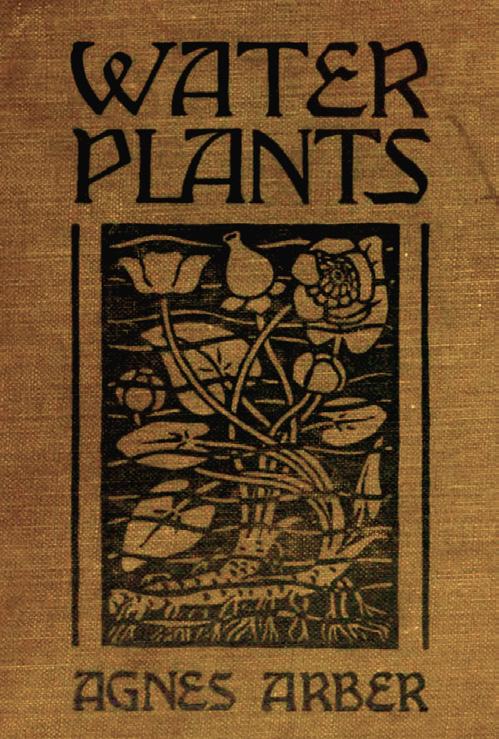
11 Wetland Science & Practice January 2023
Figure
"WATER PLANTS AS A BIOLOGICAL GROUP, WITH A CONSIDERATION OF CERTAIN TYPICAL LIFE-HISTORIES." It contains ten chapters, all of which, except the first, on the classification of water plants, summarize what is known about the life history of one or more representative taxa of aquatic plants. Part II deals with "THE VEGETATIVE AND REPRODUCTIVE ORGANS OF WATER PLANTS, CONSIDERED GENERALLY." This section has chapters on leaves, stems, roots, flowers, and fruits, as well as on vegetative reproduction. Part III concerns "THE PHYSIOLOGICAL CONDITIONS OF PLANT LIFE IN WATER." It has only four chapters. Three chapters discuss gas exchange, nutrient uptake, and physical factors. The fourth is an overview of the ecology of water plants. Part IV concerns “THE STUDY OF WATER PLANTS FROM THE PHYLOGENETIC AND EVOLUTIONARY STANDPOINTS.” The first chapter in this section is on the dispersal and distribution of water plants. The remaining four chapters are concerned with the systematic distribution of water plants, the aquatic origin of monocotyledons, natural selection and water plants, and water plants and the law of loss in evolution.
Since the stated purpose of this book is to elucidate evolutionary processes, Arber’s discussion of this topic is of particular interest. One major evolutionary question that Arber addressed is the origin of aquatic plants. There were two competing theories at the time: were they escapees from terrestrial environments or hardy pioneers of the plant world? Arber’s answer: “… the assumption [is] that the adoption of an aquatic life is a device by which a poorly equipped species may escape from the competition of its more favoured compeers, saving itself from extinction by retirement into a quiet back-water of existence. In other words, water life is regarded as a refuge for the destitute among plants. The present writer, having begun the study of aquatics ten years ago with a full conviction of the truth of this picturesque theory, has gradually and reluctantly been forced to the conclusion that there is no sound evidence in its favour. On the hypothesis in question, water plants are more or less comparable with the remnant of a defeated race among mankind, which preserves its existence by retreating into some forbidding and inaccessible region, into which its conquerors have little temptation to pursue it. But this analogy is probably quite misleading; it would perhaps be more illuminating to compare water plants with the pioneers who are to be found leading hard and difficult lives in barbaric regions on the frontiers of civilisation not forced thereto by failure to 'make good' in the excessive competition prevailing in regions more anciently inhabited, but impelled to the frontiersman's life by a natural, inborn affinity for the adventurous conditions which it offers. In the same way, water plants appear to the present writer to have adopted this mode of life, not as a last resource, but because it happened to suit their particular constitution and character. There is little doubt that, after they had once en-
tered upon an aquatic career, they must have evolved along lines which gradually harmonised them more and more completely with their surroundings, but the initial step or steps, which led to the adoption of the water habit, must have been due to an innate affinity for the environment, rather than to the negative quality of incapacity for success in terrestrial life; to pursue our metaphor the man, who fails in the struggle for existence at home, is not of the type that makes the successful colonist."
Arber’s Water Plants, like Schenck’s Die Biologie der Wassergewächse before it, raised the visibility of aquatic plants and aquatic systems in the first half of the 20th Century. It also made the literature on them, much of it in German, easily available to non-German speakers and stimulated further work on aquatic plants and aquatic systems. According to Google Scholar, Water Plants has been cited nearly 1,000 times, making it a classic in the history of wetland science. Schenck’s Die Biologie der Wassergewächse has been cited only 36 times. It is by far Arber’s most frequently cited work. There would not be an update for more than 45 years, C. D. Sculthorpe’s (1967)
The Biology of Aquatic Vascular Plants.
WILLIAM HAROLD PEARSALL (1891-1964)
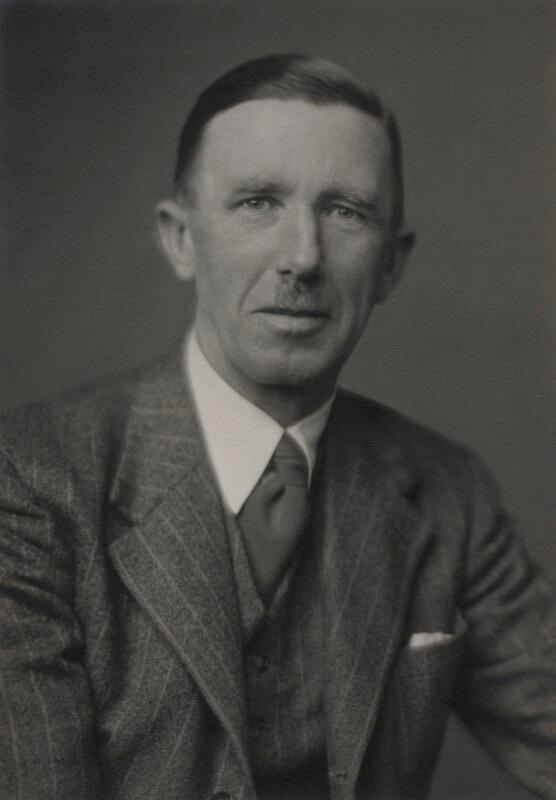
Although William H. Pearsall’s early papers (1917-1918) are only cited in a footnote in Arber’s Water Plants, his ecological studies of aquatic plants and vegetation in the 1910s, 1920s, and 1930s ushered in a new era for wetland science in Britain. According to G. E. Fogg (1979), “The beginnings of organized freshwater biology in Britain may be seen in the work of W. H. Pearsall on the aquatic plants of the English Lakes.”
Pearsall (Figure 3) was born in 1891 at Stourbridge, near Birmingham in the West Midlands of England. His father was a schoolteacher and a keen amateur naturalist interested in the English Lakes. Pearsall senior and junior spent their summer holidays in the Lake District collecting aquatic plants. Pearsall senior was a self-taught expert on several genera of aquatic plants (pondweeds, starworts, and aquatic buttercups). William Pearsall attended his father's school until 1905 and then Ulverston Grammar School. In 1909, he was admitted to Victoria University of Manchester and gradu-
Wetland Science & Practice January 2023 12
Figure 3. William H. Pearsall in 1941. (Courtesy of the National Portrait Gallery)
ated in 1913 with a degree in Botany. Upon graduation from Victoria University, he was awarded a University Graduate Scholarship. With the help of his father, he then began a systematic survey of the distribution of aquatic plants in the 11 English Lakes. The objective of this study was to relate their distribution to substrate characteristics, water transparency, and water chemistry. In 1914, he surveyed the distribution of aquatic plants in Esthwaite Water, which resulted in the publication of his two-part paper “The aquatic and marsh vegetation of Esthwaite Water” (Pearsall 1917-1918). Based on this work, he was awarded an M.Sc. in 1915. World War I interrupted his academic career, and in 1916 he joined the Royal Artillery and was sent to France. Pearsall had permanent hearing loss when he returned to England in 1919. That same year he became an Assistant Lecturer in Botany at the University of Leeds. In 1920, he was awarded a D.Sc. from Manchester University for his work on the wetland vegetation of the English Lakes, and in 1922 he was promoted to Reader in Botany at Leeds. He moved from Leeds to Sheffield in 1938 to become Chair of Botany. Pearsall’s final academic position was the prestigious Quain Chair of Botany at University College London from 1944 until his retirement in 1957. Pearsall joined the British Ecological Society soon after its foundation and became its president in 1936. From 1937 to 1947, he was Editor of the Society’s Journal of Ecology In 1940 he was elected a Fellow of the Royal Society, six years before Agnes Arber. W. H. Pearsall died in 1964.
Pearsall had a long, distinguished, and varied career as a researcher, but during its second half, his research had little or nothing to do with wetland science, e.g., his work on primary production, protein chemistry, and Serengeti National Park. To the development of wetland science, Pearsall made three important contributions: (1) his detailed studies of the distribution of wetland plants and vegetation in the lakes of the English Lake District, (2) his pioneering studies of oxidation-reduction (redox) potentials in wetland soils, and (3) his role in the establishment of the Freshwater Biological Association. For a complete account of William Harold Pearsall’s life and scientific career, see Clapham (1971).
Studies of Wetland Vegetation of English Lakes
In his 1911 book Types of British Vegetation A. G. Tansley reported that “Comprehensive studies of aquatic vegetation … have not yet been carried out in this country.“ William Harold Pearsall would soon change this.
With his father's help, Pearsall spent seven years, 19131920, studying the vegetation of 11 lakes in the English Lake District in northwest England. His overarching goal was to identify the factors controlling the distribution of wetland plants in the lakes. His first papers were on the vegetation of Esthwaite (Pearsall 1917-1918). They focused on the physical features of the lake and how these affected the distribution of its submerged and emergent communities
Figure 4. Map of Grassholme Island area along a small section of the western shore of Lake Windermere shows the relationship of Potamogeton spp. to shelter and to silting and the distribution of Castalia minor (Nymphaea odorata var. minor) and Equisetum-Carex reedswamp in a closed bay (lower left). Figure 10 from Pearsall (1920).

(Figure 4). Esthwaite has a winding shoreline that creates a wide range of water depths, wind and wave exposures, sedimentation rates, and sediment types. It also had a large number of different plant assemblages. Pearsall’s decision to concentrate initially on Esthwaite enabled him to become familiar with its various plant assemblages and the environmental conditions where they were found.
'The development of vegetation in the English Lakes, considered in relation to the general evolution of glacial lakes and rock basins' (Pearsall 1921) summarized his seven years of research in the Lake District. Among the features of each lake surveyed were the percentage of the lake shores, down to 30 ft, that were rocky; the percentage of a lake’s watershed (drainage basin) cultivated or cultivatable; the transparency of the water; and chemical characteristics of a lake’s sediments and water. Pearsall correlated environmental variables to the distribution of vegetation communities in the lakes, including the types of phytoplankton. He noted that the whole of the Lake District had been glaciated during the Pleistocene, and the retreat of the glaciers resulted in many rock basins and that all the lakes he studied originated in these rock basins. However, with
13 Wetland Science & Practice January 2023
time the lake basins diverged significantly. In the 1920s, the percentage of rocky shores around the lakes ranged from 12% for Esthwaite to 73% for Wastwater and cultivatable land in a basin from 5.2% for Wastwater to 45.4% for Esthwaite. Because the water of the silted lakes carries more fine material in suspension, the rockier the basin, the more transparent the water. Another factor that contributed to siltation in these lakes was softer rocks along the shores in some lake basins. Pearsall recognized that lakes and lake basins become modified as they age and that the lakes in the Lake District illustrated the processes that controlled lake development.
Figure 5.
From his Esthwaite and subsequent lake studies, Pearsall (1920, 1921) concluded that the distribution and succession of wetland vegetation was a function of rates of silt deposition (Figure 5) and the physical and correlated chemical properties of the accumulated sediments. The various plant assemblages were found in more or less narrow zones parallel to the shoreline at differing depths. In the case of submerged aquatics, Pearsall believed that their zonation pattern was not the result of differences in their light requirements per se but due to differences in the rate and type of siltation in different zones. His data demonstrated that light penetration depths varied from lake to lake (Figure 6), and as expected, light penetrated furthest in Wastwater and least in Esthwaite. Aquatic plants are found in depths up to 7.7 meters in Wastwater but only to 4.1 meters in Esthwaite.

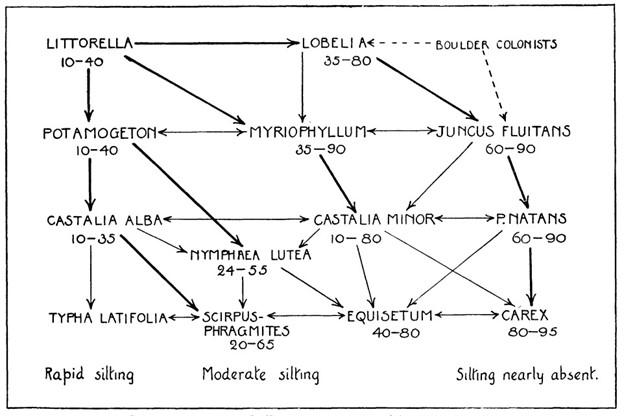
Pearsall was not the first to study the vegetation of lakes (for example, see Tansley 1911 and Chapter 23 in Arber 1920). However, his studies were far more detailed, sophisticated, and comprehensive than those of his predecessors, e.g., Guppy (1893) and West (1906, 1910). He set the standard for all subsequent wetland vegetation studies not only in Britain but around the world.
Pioneering Reduction-Oxidation Potentials Reduction-oxidation or redox is a chemical reaction in
Figure 6. Depth distribution of characteristic species in the lakes of the English Lake District. The arrows show the light limit for vegetation in a lake. The thickened parts of the baseline of each panel indicate the depths in the lake that are normally silted. Figure 2 from Pearsall (1921).
which electrons are gained or lost by a compound. A gain of electrons is a reduction, and a loss is an oxidation. Redox potential is a measurement of the potential for the transfer of electrons from one compound to another. In wetland soils, as organic matter decomposes, electrons and hydrogen ions are released. Under aerobic conditions, the electrons and hydrogen ions react with oxygen to form water. In other words, the organic matter loses electrons, i.e., it is oxidized, and oxygen gains them. This chemical reaction is aerobic respiration. It is the inverse of photosynthesis, and the energy fixed in organic matter by photosynthesis is released by aerobic and anaerobic respiration. The potential for the transfer of electrons between organic matter and oxygen has a voltage (V). This voltage is its redox potential (Eh). The redox potential for aerobic respiration under standard conditions (25° C and pH 7) is 0.82 or 820 mV, the highest voltage found in soils. When oxygen is depleted, the electrons released by organic matter decomposition are transferred to other terminal electron acceptors (nitrate, manganese oxide, ferric iron, sulfate, etc.), creating compounds other than water. For example, under anaerobic conditions, electrons can flow to sulfate, creating
Wetland Science & Practice January 2023 14
Succession sequences of shallow water communities in rapid, moderate, and low silting areas. The numbers below each community are the percent organic content of the soil. Figure 13 from Pearsall (1920).
hydrogen sulfide. This reaction is called sulfate reduction, and the voltage associated with it is - 0.21 V, a much lower redox potential than that for aerobic respiration. Nitrate has a greater affinity for electrons than sulfate but less than oxygen. Suppose both nitrate and sulfate are present in anaerobic soils. In that case, electrons will preferentially flow to nitrate (Eh 043 V) and will not flow to sulfate (Eh -0.21) until all the nitrate has been converted to nitrogen gas. The reduction of nitrate is called denitrification. By the early 1930s, redox reactions had been studied by chemists under laboratory conditions. However, whether redox potentials could be measured in natural water or soils was unknown. Nor was the ecological significance of redox reactions understood.
In 1938, Pearsall published three papers entitled “The soil complex in relation to plant communities," Parts I, II, and III (Pearsall 1938a, b, c). In Part I, "Oxidationreduction potentials in soils,” Pearsall describes chemical theories that are the bases for redox measurements and a technique for measuring the electric potentials of soils. Chemists and biochemists had previously worked out the underlying theory and methodology but using oxidationreduction potentials to characterize uncultivated soils had not been attempted. Pearsall measured soil electric potentials between a clean platinum electrode inserted into the soil and a calomel reference electrode (a substitute for a cumbersome hydrogen electrode) connected by a KCI-agar bridge. Electric potentials measured in different soils had to be adjusted to a common pH to make them comparable. Because the average pH of soils in northern England was 5, Pearsall adopted a standard pH of 5. This adjusted Eh was called Eh5.
After measuring soil potentials from many types of natural soils, Pearsall found that electric potentials decreased as their water content increased. Waterlogged soils typically had potentials below 200 mV. He also found that soils with potentials of 350 mV contained no detectable ferrous (reduced) iron, while those below 320 mV did. Pearsall concluded that pH-adjusted potentials between 320 and 350 mV marked a transition between oxidizing and reducing conditions: soils with Eh5s above 350 mV were oxidizing soils, and those with Eh5s below 320 mV were reducing soils. Pearsall’s three 1938 papers demonstrated that methods developed in the physical sciences could be used to characterize the chemical environment of ecological systems. Although initially, there were difficulties with the field application of the methodology and in the interpretation of field measurements, these were soon resolved, and the method yielded reliable and interpretable results.
In 1939 Pearsall published a follow-up paper with C. H. Mortimer of the Freshwater Biological Association - “Oxidation-reduction potential in water-logged soils, natural waters and muds.” It confirmed that “approximately stable reproducible potentials can be demonstrated in soils and muds …, and in natural waters
at least in a zone between 250 and 350 mV at pH 5.” Their studies also confirmed that products of oxidation (ferric iron, nitrate, sulfate) are found at higher adjusted potentials (350 mV or higher), while their reduced counterparts (ferrous iron, ammonia, sulfide) are present at potentials below 350 mV. With a simple experiment in which air or nitrogen was bubbled through a soil slurry, Pearsall and Mortimer demonstrated that in aquatic ecosystems, oxidation-reduction reactions were easily reversible (Figure 7).
Because redox reactions regulate the quantity and chemical nature of many dissolved substances in water and saturated soils, Pearsall’s pioneering studies of the electrical potentials of soils and water were of great ecological significance. His studies ushered in a new era in wetland science, especially wetland biogeochemistry. Pearsall demonstrated that waterlogged soils are usually anaerobic and that a buildup of organic matter in wetland soils typically lowers redox potentials. Measuring redox in wetlands has become an essential tool in studying many aspects of wetland ecology, from the distribution of invertebrates to the design of treatment wetlands.
Figure 7. Changes in electric potential (mV) over time in an aqueous mud slurry (Ph 5.59) after bubbling air through it for 30 s at time A and (dotted line) with continuous bubbling of nitrogen through it time B. Figure 1 in Pearsall and Mortimer (1939).

Founding the Freshwater Biological Association
In September 1896, D. J. Scourfield read a paper to Section D of the British Association [for the Advancement of Science] entitled "Wanted, a British Fresh-Water Biological Station." In this paper, Scourfield advocated the establishment of an institution devoted to freshwater biology in Britain like those already in existence in Europe. Although some small research programs in freshwater biology were established in England in the intervening years (Le Cren 1979), a serious movement to establish a scientific laboratory devoted to the study of freshwater biology did not take shape until 1927 following F. E. Fritsch’s address to the British Association at Leeds about the need to establish such a laboratory. Fritsch’s talk resulted in an ad hoc
15 Wetland Science & Practice January 2023
committee being established in 1928 to explore the feasibility of such a laboratory. Although many other scientists were involved, three men took the lead in making this a reality: F. E. Fritsch (Professor of Botany at Queen Mary University), J. T. Saunders (Lecturer in Zoology at Cambridge), and W. H. Pearsall (Reader in Botany at Leeds).
Because this effort coincided with the onset of the Great Depression (or “Slump” as it was called in Britain), plans to raise money for a new building to house the proposed freshwater research station had to be abandoned. However, in 1929, the Freshwater Biological Association of the British Empire was established (Fogg 1979; Fritsch 1937; Le Cren 1979). Funds to establish a field station were raised by the Association from various individual contributors, angling organizations, the Fishmongers’ Company, and the government agency responsible for fisheries research. The obvious location for the new field station was the Lake District because of all the work done there by Pearsall. The Association acquired a few rooms in Wray Castle for its laboratory and the use of its cellars and boat house. Although Wray Castle was conveniently located near two lakes, Esthwaite Water and the north basin of Windermere, this 19th-Century imitation castle was badly in need of repair, and most of it was occupied by the Youth Hostels Association. In short, it was not an ideal place to conduct scientific research.
The laboratory opened in 1931 with a staff of two scientists. At this time, J. T. Saunders was teaching the first university course in “hydrobiology” in Britain at Cambridge, and not surprisingly, the initial scientific staff was recruited from his former or current students. However, because Pearsall, its first Honorary Director (1931-1937), knew the Lake District so well, he provided much of the station’s initial scientific direction.
Phillip Ullyott was one of the first staffers hired by the Freshwater Biological Association in 1931. As a follow-up to Peasrsall’s earlier studies of factors controlling the distribution of wetland plants in the lakes of the Lake District,

Pearsall and Ullyott conducted research on light conditions in Lake Windermere. This study first required developing suitable light measuring equipment (Pearsall and Ullyott 1933) and then deploying it to measure light conditions in situ at different depths (Pearsall and Ullyott 1934). They showed that light penetration into Windermere highly depends on phytoplankton density in the water column (Figure 8). During July and August 1932, blue-green algae reduced the light intensity at the limit of submerged vegetation (4.3 m) by more than 50 % and, since light limits the maximum depth at which submerged vegetation can grow, it is phytoplankton that set this limit in Lake Windermere.
Another early Freshwater Biological Association scientist with whom Pearsall collaborated was Clifford H. Mortimer, who joined the staff in 1935. As noted earlier, Pearsall and Mortimer (1939) published an important joint paper on oxidation-reduction potentials in waterlogged soils and water. Mortimer built on this work and conducted a major study of the sediment-water interface in lakes that demonstrated the importance of oxidation-reduction potential gradients on seasonal patterns in lake water chemistry (Mortimer 1941). According to Google Scholar, Mortimer’s “The exchange of dissolved substances between mud and water in lakes” is a classic work in limnology that has been cited over 2000 times.
“The research achievement of the [Freshwater Biological Association] … may fairly be regarded as in large part the triumphant continuation of the work begun by Pearsall and his father, and Pearsall played an active and greatly appreciated role in guiding, encouraging, and inspiring the research workers until the end of his life" (Clapham 1971). Talling (2008) provides an excellent overview of Pearsall’s and the Freshwater Biological Association’s contributions to the development of the aquatic sciences. From its beginnings, the Freshwater Biological Association’s main objective was basic biology research to solve practical problems in managing freshwater resources (Le Cren 1979).
Wetland Science & Practice January 2023 16
Figure 8. Light intensity at 4.3 m, the limit of aquatic vegetation, and phytoplankton density in the upper 5 m of Lake Windermere from March 1932 to March 1933. Figure 2 in Pearsall and Ulyott (1934).
FINAL THOUGHTS
Britain was fortunate that it had two seminal figures so early in the development of wetland science. No work comparable to Arber’s Water Plants was published in the U.S. until 1976, when the British-born and educated G. E. Hutchinson published his A Treatise on Limnology. Volume III. Limnological Botany. Detailed studies of wetland vegetation in multiple bodies of water compared to those of Pearsall's in the Lake District did not occur in the U.S. until the early 1940s, when William T. Penfound and his colleagues studied the vegetation of the Tennessee Valley Authority reservoirs (van der Valk 2022).
Agnes Arber and William Pearsall contributed significantly to wetland science but in very different ways. Arber was not interested in wetlands or wetland plants per se. She was an anatomist, not an ecologist, who believed that she could discover the origin of monocotyledons by studying their anatomy and morphology. She was interested in wetland plants because many families of monocotyledons are solely or predominantly wetland plants, and monocotyledons were believed to have evolved from dicotyledonous wetland ancestors. Although Arber wrote Water Plants to explore the evolution of wetland plants, Water Plants remained an indispensable reference book for wetland scientists for decades after its publication. Its 65-page annotated bibliography was a treasure trove of information on the biology, ecology, and evolution of wetland plants. It is so extensive that it has its own index.
Agnes Arber was an exceptional writer, and one of the reasons for the longevity of Water Plants is that it is easy and fun to read. It is the only work in wetland science I have read solely for pleasure. One of her biographers, Maura Flannery (2005), makes the same point.: "…she is fun to read. She writes extremely well, and extremely clearly. She is learned without being at all dense or obtuse; she is learned in an unselfconscious way that was always rare but is almost unheard of today.” If interested in reading her book, Water Plants is available online (https://archive. org/details/in.ernet.dli.2015.351383).
Because Arber never held an academic position after leaving University College London, she did not train graduate students who would carry on her legacy, nor did she create any kind of institutional legacy. Arber may have been a one-hit wonder in wetland science, but it was a longlasting and influential hit. However, I must emphasize that her major scientific contributions and impacts were outside wetland science.
Unlike Agnes Arber, William Pearsall was a successful British academic. His ground-breaking research and publications on the vegetation of English lakes made him the authority on the subject when he was a young man and got him his first permanent academic position. Again, unlike Arber, Pearsall trained graduate students. Two of these, Ramdeo Misra in India and Eville Gorham in Canada and
the United States, would become leaders in wetland science outside Britain. However, he was not just a successful academic but an outstanding scientist.
Pearsall collected large quantities of field data, but his uncanny ability to deduce patterns from these data made him an exceptional scientist, as was his ability to propose well-founded explanations of the underlying causes of these patterns. Through his teaching, research, and leadership of the Freshwater Biological Association, Pearsall transformed nascent wetland science from scattered descriptive and taxonomically focused natural history studies into a rigorous and coherent branch of science.
One thing that Arber and Pearsall did have in common was an international perspective. They both paid careful attention to research publications from scientists in continental Europe and North America. By the late 19th and early 20th Centuries, numerous studies had already been published on aquatic systems, especially lakes (Egerton 2014). Water Plants is essentially a review of previously published papers. Pearsall was influenced by the work of several American scientists like Raymond Pond (1905) and the water chemistry and light penetration studies of Wisconsin limnologists E. A. Birge and Chancey Juday.
REFERENCES
Arber, A. 1912. Herbals, their Origin and Evolution: A Chapter in the History of Botany, 1470-1670. Cambridge University Press, Cambridge, UK.
Arber, A. 1919a. Obituary: Ethel Sargant. October 28, 1863-January 16, 1918. The New Phytologist 18: 120-128.
Arber, A. 1919b. Aquatic angiosperms: the significance of their systematic distribution. Journal of Botany 57: 83-86.
Arber, A. 1919c. On heterophylly in water plants. American Naturalist 53: 272-278.
Arber, A. 1919d. The vegetative morphology of Pistia and the Lemnaceae. Proceedings of the Royal Society of London, Series B. 91: 96-103. Arber, A. 1920. Water Plants: A Study of Aquatic Angiosperms. University Press, Cambridge, Cambridge, UK.
Arber, A. 1925. Monocotyledons: A Morphological Study. University Press, Cambridge, Cambridge, UK.
Arber, A. 1934. The Gramineae: A Study of Cereal, Bamboo, and Grass. University Press, Cambridge, Cambridge, UK.
Clapham, A.R. 1971. William Harold Pearsall. 1891-1964. Biographical Memoirs of Fellows of the Royal Society 17: 511-540.
Egerton, F.N. 2014. History of ecological sciences, Part 50: Formalizing limnology, 1870s to 1920s. Bulletin of the Ecological Society of America 95: 130-153.
Flannery, M.C. 2005. Agnes Arber in the 21st Century. The Systematist 24: 13-17.
Fogg, G.E. 1979. Freshwater Biological Association 1929-1979: The first fifty years. Freshwater Biological Association, Ambleside, U.K. Fritsch, F.E. 1937. The early history of the Association up to the date of the opening of the laboratory in 1931. Report Freshwater Biological Association 5: 33-41.
Guppy, H.B. 1893. The distribution of aquatic plants and Animals. Scottish Geographical Magazine 9: 28-33.
Hutchinson, G.E. 1976. A Treatise on Limnology. Vol. III. Limnological Botany. John Wiley & Sons, New York, NY.
17 Wetland Science & Practice January 2023
Le Cren, E.D. 1979. The first fifty years of the Freshwater Biological Association. Annual Report of the Freshwater Biological Association 47: 27-42.
Mortimer, C.H. 1941. The exchange of dissolved substances between mud and water in lakes. Journal of Ecology 29: 280-329.
Packer, K. 1997. A laboratory of one’s own: the life and works of Agnes Arber, F. R. S. (1879-1960). Notes and Records of the Royal Society of London 51: 87–104.
Pearsall, W.H. 1917-1918. The aquatic and marsh vegetation of Esthwaite (1917-1918) Water. Journal of Ecology 5: 180-202 and 6: 53-74.
Pearsall, W.H. 1918. On the classification of aquatic plant communities. Journal of Ecology 6: 75-83.
Pearsall, W.H. 1920. The aquatic vegetation of the English Lakes. Journal of Ecology 8: 163-201.
Pearsall, W.H. 1921. The development of vegetation in the English Lakes, considered in relation to the general evolution of glacial lakes and rock basins. Proceedings of the Royal Society, B 92: 259-284.
Pearsall, W.H. 1938a. The soil complex in relation to plant communities. I. Oxidation-reduction potentials in soils. Journal of Ecology 26: 180-193.
Pearsall, W.H. 1938b. The soil complex in relation to plant communities. II. Characteristic woodland soils. Journal of Ecology 26: 194-209.
Pearsall, W.H. 1938c. The soil complex in relation to plant communities. III. Moorlands and bogs Journal of Ecology 26: 298-315.
Pearsall, W.H. and C. H. Mortimer. 1939. Oxidation-reduction potentials in waterlogged soils, natural waters and muds. Journal of Ecology 27: 483-501.
Pearsall, W.H. and P. Ullyott. 1933. Light penetration into fresh water: I. A thermionic potentiometer for measuring light intensity with photoelectric cells. Journal of Experimental Biology 10: 293–305.
Pearsall, W.H. and P. Ullyott. 1934. Light penetration into fresh water: III. Seasonal variations in the light conditions in Windermere in relation to vegetation. Journal of Experimental Biology 11: 89–93
Pond, R.H. 1905. The relation of aquatic plants to the substratum. Contribution to the Biology of the Great Lakes, U.S. Fish Commission of Fish and Fisheries, Washington, DC.
Sargant, E. 1903. A Theory of the origin of monocotyledons, founded on the structure of their seedlings. Annals of Botany 17:1-92.
Sargant, E. and A. Arber. 1915. The Comparative morphology of the embryo and seedling in the Gramineae. Annals of Botany 29:161-222.
Schmid, R. 2001. Agnes Arber, née Robertson (1879-1960): Fragments of her Life, Including her Place in Biology and in Women's Studies. Annals of Botany 88: 1105-1128.
Schenck, H. 1886. Die Biologie der Wassergewächse. FR Cohen, Bonn, Germany.
Sculthorpe, C.D. 1967. The Biology of Aquatic Vascular Plants. Edward Arnold, London, UK.
Talling, F. J. 2008. The developmental history of inland water science. Freshwater Review 1:119-141.
Tansley, A.G. 1911. Types of British Vegetation. Central Committee for the Survey and Study of British Vegetation, University Press, Cambridge, UK.
Thomas, H.H. 1960. Agnes Arber, 1879-1960. Biographical Memoirs of Fellows of the Royal Society 6:1-11.
van der Valk, A.G. 2017. Antecedent wetland ecologists - German and Austrian in the Ninetieth Century. Wetland Science and Practice 34: 112-117.
van der Valk, A.G. 1922. Naturalistic control: W. T. Penfound, T. F. Hall, and A. D. Hess and malaria control in Tennessee Valley Authority reservoirs. Wetland Science and Practice 40: 12-18.
West, G. 1906. A comparative study of the dominant phanerogamic and higher cryptogamic flora of aquatic habit, in three lake areas of Scotland. Proceedings of the Royal Society of Edinburgh 25: 967-1023.
West, G. 1910. VI.—A further contribution to a comparative study of the dominant phanerogamic and higher cryptogamic flora of aquatic habit in Scottish lakes. Proceedings of the Royal Society of Edinburgh 30: 65-182.
Wetland Science & Practice January 2023 18
Great Meadows National Wildlife Refuge, Massachusetts, USA: A Wetland of Distinction

Roy Messaros Director of Engineering Princeton Hydro, LLC, Trenton, NJ 08611 roymessaros@aol.com
Great Meadows National Wildlife Refuge is an approximately 100-hectare wetland complex located in suburban eastern Massachusetts, about 26 km northwest of Boston (Figure 1). It is comprised of two complexes that fall within the floodplain of the Sudbury and Concord Rivers. It lies within the Southern New England Coastal Plains and Hills Ecoregion, an area comprised of generally flat areas with a few low hills (Griffith et al. 2009).
Great Meadows NWR was established to protect and manage the freshwater wetlands for federally protected migratory birds (Figure 2). The refuge, with its wetlands and surrounding waters, are easily accessible for boating and fishing as well as by land. It provides opportunities for nature observation and environmental education, while supporting multiple protected plant and animal wetland species. Great Meadows is identified on Massachusetts' BioMap2 (Natural Heritage & Endangered Species Program 2012) as being Core Habitat with some Critical Natural Landscape and includes Priority Natural Communities, with most of it mapped as Habitat for Species of Conservation Concern that includes a large area of Forest Core and numerous vernal pools.
As part of the National Wildlife Refuge System (a network of federal land and waters for the protection of wildlife administered by the U.S. Fish and Wildlife Service), Great Meadows protects biological diverse wetland flora and supports significant numbers of wetland-depen-

dent fauna, such as birds and fish. Among the most common animals in the wetlands and shallow water impoundments are muskrat (Ondatra zibethicus), great blue heron (Ardea herodias; Figure 3), red-winged blackbird (Agelaius phoeniceus) and various waterfowl including mallard (Anas platyrhynchos), black duck (Anas rubripes), wood duck (Aix sponsa), blue-winged teal (Spatula discors: Figure 4), and Canada goose (Branta canadensis). Other fauna of interest include common moorhen (Gallinula chloropus) and umber shadowdragon (Neurocordulia obsoleta) – an emerald dragonfly, plus state endangered birds: least bittern (Ixobrychus exilis), pied-billed grebe (Podilymbus podiceps; Figure 5), upland sandpiper (Bartramia longicauda), American bittern (Botaurus lentiginosus), and two state threatened species grasshopper sparrow (Ammodramus savannarum) and king rail (Rallus elegans). Great Meadows also harbors the largest genetically distinct populations of threatened Blanding’s turtle (Emydoidea blandingii) in the Northeast (Figure 6).
Area forests are mainly central hardwoods with some transition hardwoods, such as elm (Ulmus sp.), ash (Fraxinus sp.), and red maple (Acer rubrum), plus red pine (Pinus

19 Wetland Science & Practice January 2023
Figure 1. Location of Great Meadows National Wildlife Refuge in eastern Massachusetts, USA. The refuge is represented by two main complexes shown in blue: the Concord Unit (top) and the Sudbury Unit (bottom). (Source: U.S. Fish and Wildlife Service)
Figure 3. Great blue heron (Ardea herodias). (Photo by Ralph Tiner)
Figure 2. A view of Great Meadows NWR showing marshland and open water important for waterfowl. (Source: Wikimedia 2010)
resinosa) and white pine (Pinus strobus). Buttonbush (Cephalanthus occidentalis) is a dominant wetland shrub (Figure 7) while cattail (Typha sp.) is perhaps the most abundant marsh plant. American water lotus (Nelumbo lutea) is also present in open water areas. Unique flora include endangered species, such as Acadian quillwort
(Isoetes acadiensis), violet wood sorrel (Oxalis violacea), pod grass (Scheuchzeria palustris), and lake quillwort (Isoetes lacustris), as well as the threatened Longʹs bulrush (Scirpus longii), Britton’s violet (Viola brittoniana), and Engelmann’s umbrella-sedge (Cyperus engelmannii).
In many places, invasive species such as water chestnut (Trapa natans) and purple loosestrife (Lythrum salicaria), have displaced plant species of high waterfowl value like bur-reed (Sparganium sp.) and roundhead bulrush (Scirpoides holoschoenus) (USFWS website https://www.fws. gov/refuge/great-meadows). Continued effort is needed for wildlife management to control exotic plants such as purple loosestrife and water chestnut.


While Great Meadows NWR facilitates such ecological connectivity, it is also recognized as a place for environmental education and for its aesthetic/cultural heritage value. Exemplary ecosystem services include flood storage/ mitigation, water quality improvement, and passive outdoor recreation (e.g., birdwatching and ecotourism). For more information about the refuge, contact the U.S. Fish and Wildlife Service at fw5rw_emnwr@fws.gov.
REFERENCES
Griffith, G.E., J.M. Omernik, S.A. Bryce, J. Royte, W.D. Hoar, J.W. Homer, D. Keirstead, K.J. Metzler, and G. Hellyer. 2009. Ecoregions of New England (Poster). U.S. Geological Survey, Reston, VA.
Natural Heritage & Endangered Species Program. 2012. BioMap2, Conserving the Biodiversity of Massachusetts in a Changing World. Massachusetts Division of Fisheries & Wildlife, Westborough, MA. https://www.mass.gov/orgs/masswildlifes-natural-heritage-endangeredspecies-program
U.S. Fish & Wildlife Service http://www.fws.gov https://www.fws.gov/refuge/great-meadows


Wetland Science & Practice January 2023 20
Figure 4. Pair of blue-winged teal (Spatula discors). (Photo by Ralph Tiner)
Figure 5. Pied-billed grebe (Podilymbus podiceps). (Photo by Ralph Tiner)
Figure 6. Blandings turtle (Emydoidea blandingii). (Photo by U.S. Fish and Wildlife Service)
Figure 7. Buttonbush (Cephalanthus occidentalis) (Photo from Plant Image Library; Creative Commons Attribution-Share Alike 2.0 Generic)
NOTES FROM THE FIELD
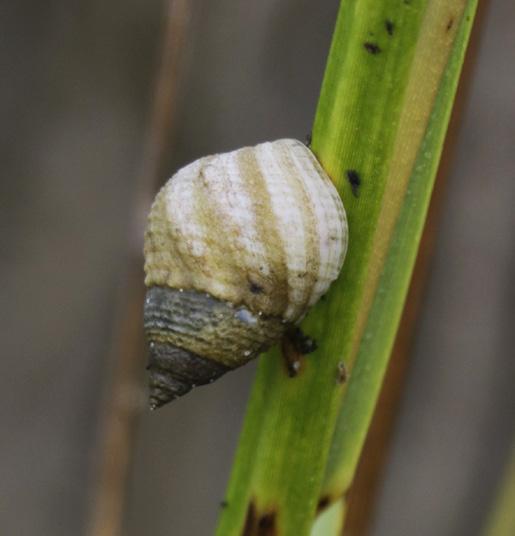
 By Ralph Tiner
By Ralph Tiner
This fall I had the pleasure of traveling to several places in the U.S. Southwest and Southeast. Of course, when traveling I usually take photographs of wetlands and wildlife. Although my trip to the Southwest didn’t involve visiting particular wetlands (I just love the region’s rock formations), I did manage to see some wetlands – cottonwoods along streams (usually from a distance) and isolated potholes on sandstone formations. For my travels to the Southeast, I had wetland visits planned: salt marshes and longleaf pine savannas in the Carolinas. I made a special stop at the Green Swamp – a preserve of The Nature Conservancy located in Supply, North Carolina – to see Venus Flytrap (Dionaea muscipula) in the wild. A former colleague Russell (Rusty) Kologiski had done his thesis on the swamp: “The Phytosociology of the Green Swamp, North Carolina” (also published as a bulletin from the NC Agricultural Experiment Station). Although I only had time for a short trek into its longleaf pine savanna, I did see plenty of Venus Flytrap along the trail as well as several other plants that were new to me besides the typical Coastal Plain wetland species. This swamp should be on the bucket list for all wetlanders as its plantlife is spectacular. Here’s a couple of websites that show what can be found when exploring the swamp during the year: https://jfowlerphotography.com/?p=8306 and https://meristemhorticulture. com/planted/2020/09/13/late-summer-in-the-green-swamp. I hope to return to this swamp at some point in the future when the orchids are in bloom. I also visited Pinckney National Wildlife Refuge (Bluffton, SC) while staying on Hilton Head. I had visited it before, in the spring when it was a haven for breeding wading birds (e.g., little blue heron, great egret, and black-crowned night heron) – a great place for wildlife photography (also saw a painted bunting). Given the season (late fall), I had no luck with the birds this time … just a few coots and common moorhens in the remaining open water areas but did see a couple of butterflies. Shown below are some photographs taken in these and nearby wetlands. (Note: All photos by the author.)
BOGUE SOUND, ATLANTIC BEACH, NC

21 Wetland Science & Practice January 2023
Sea Ox-eye (Borrichia frutescens) stand along Hoop Pole Creek Nature Trail.
Fiddler Crab (Uca cf pugilator). (Note: This young male couldn’t get in burrow as it was already occupied.)
Marsh Periwinkle (Littoraria irrorata) in a classic pose - on the stem of Smooth Cordgrass (Spartina alterniflora) at high tide.
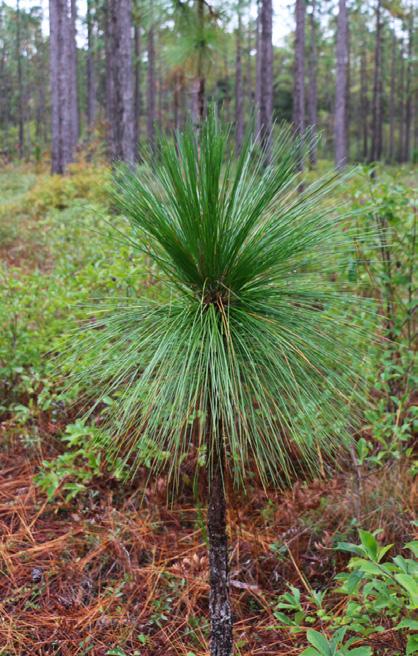
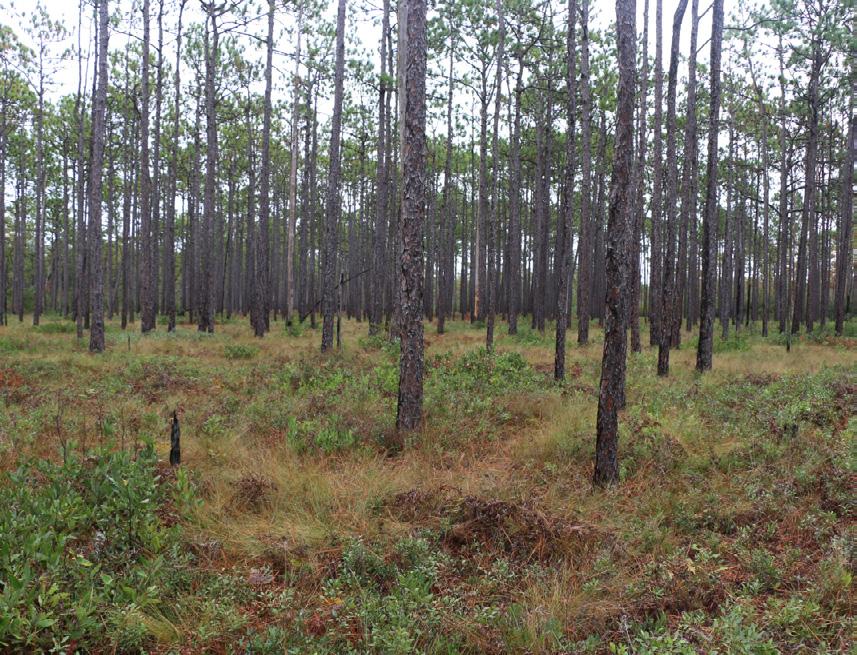






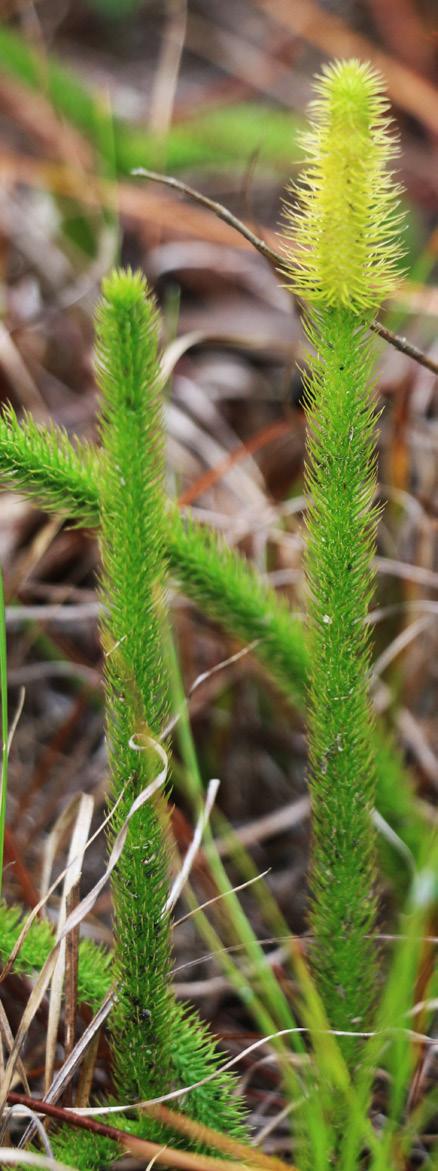
Wetland Science & Practice January 2023 22
GREEN SWAMP, SUPPLY, NC
Longleaf pine savanna – habitat of Venus flytrap. Venus Flytrap (Dionaea muscipula).
Pine Barren Gentian (Gentiana autumnalis).
Sandhill Chaffhead (Carphephorus bellidifolius) from dry site.
Longleaf Pine (Pinus palustris) - grass stage.
Longleaf Pine (Pinus palustris) - sapling.
Rush Featherling (Pleea tenuifolia) fruits on upper part of infructescence.
Foxtail Clubmoss (Lycopodiella alopecuroides).
Carolina Bog Asphodel (Tofieldiaglabra).

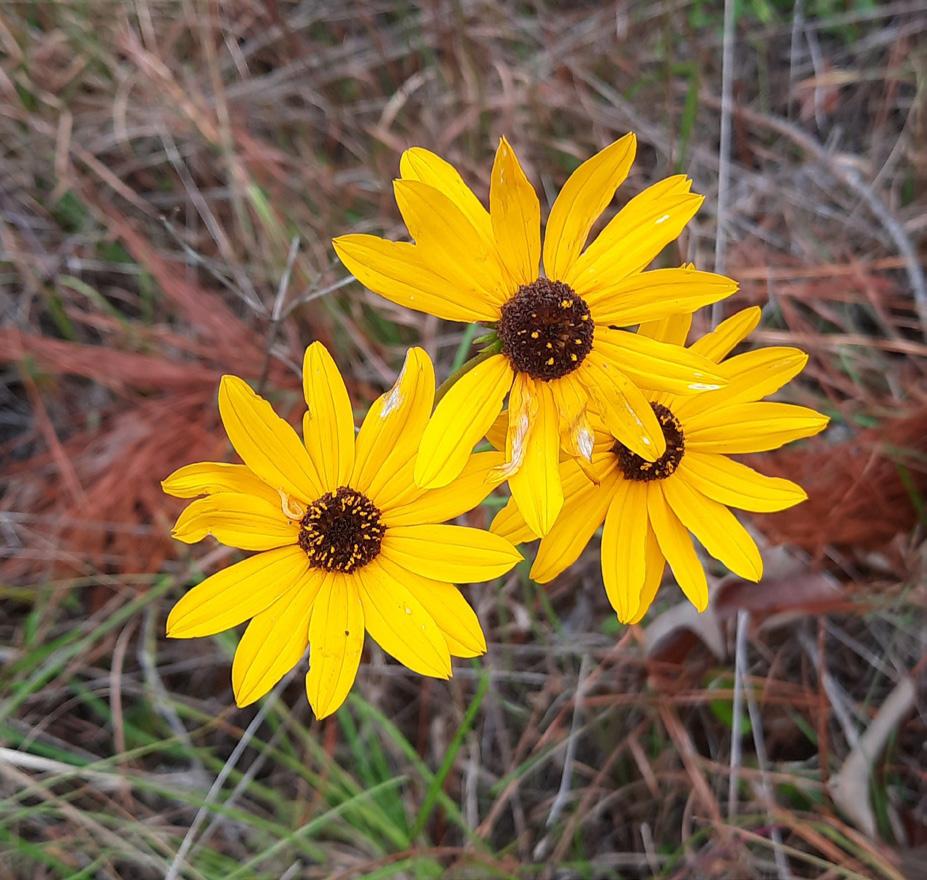

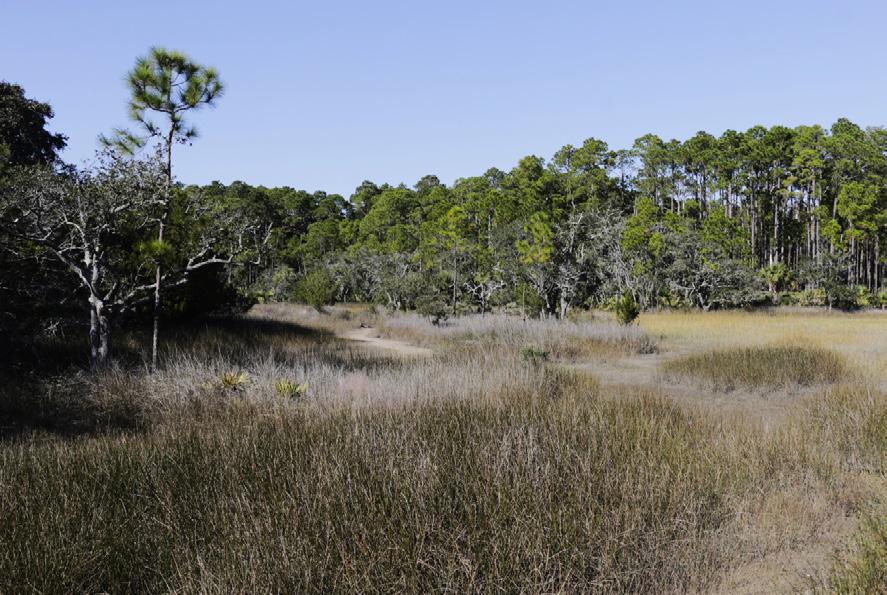

23 Wetland Science & Practice January 2023
PINCKNEY NATIONAL WILDLIFE REFUGE, BLUFFTON, SC
ROADSIDE DITCH ON RT. 17, NEAR BORDER BETWEEN NC AND SC
Swamp Sunflower (Helianthus angustifolius).
Low marsh dominated by Smooth Cordgrass (Spartinaalterniflora). (Note: Sediment deposits on lower stems (along the water's edge) and the water-carried debris brought in by a recent high tide.)
High marsh sand barren or salt flat (salina).
Upper high marsh dominated by Black Needlerush (Juncus roemerianus).
Hairy Chaffhead (Carphephorus paniculatus).
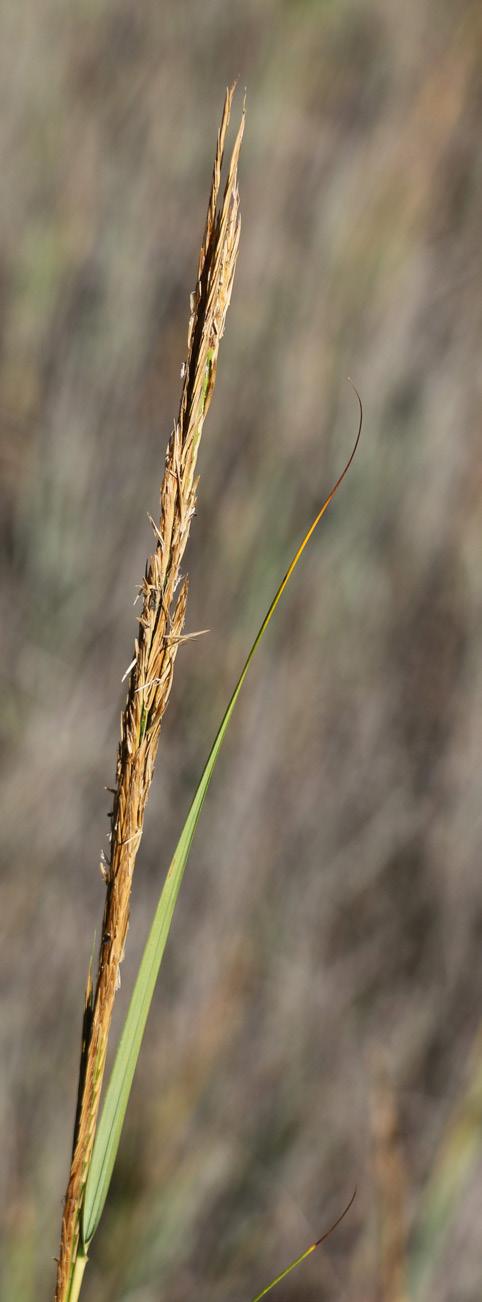

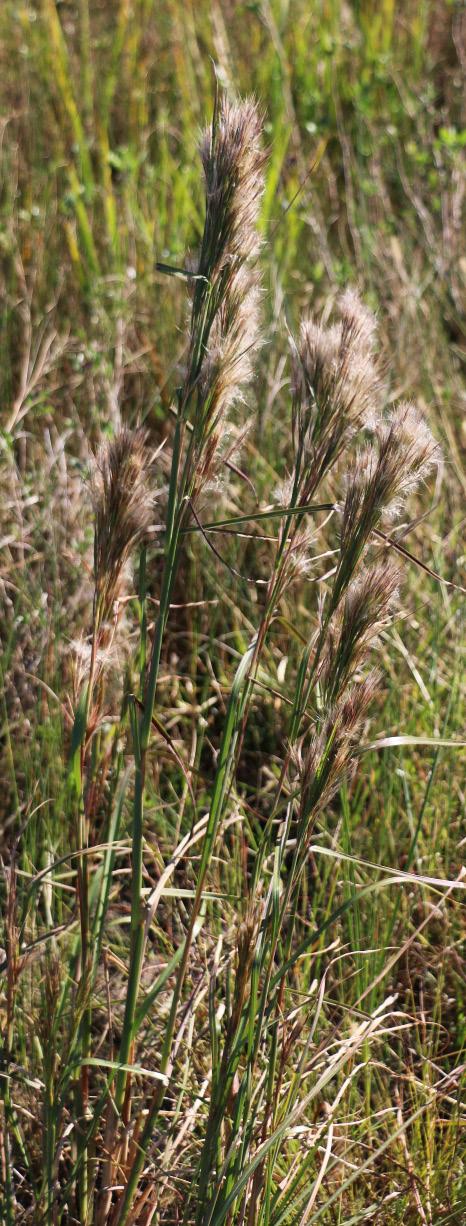

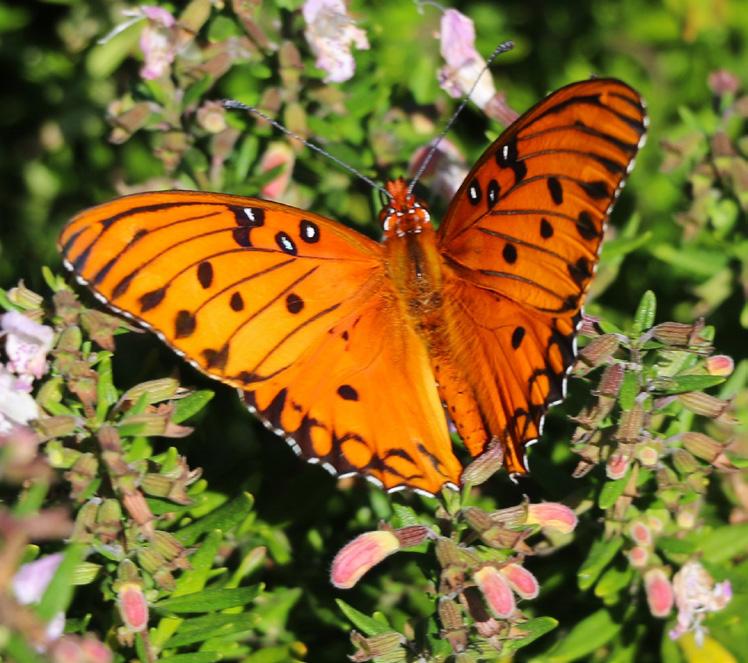
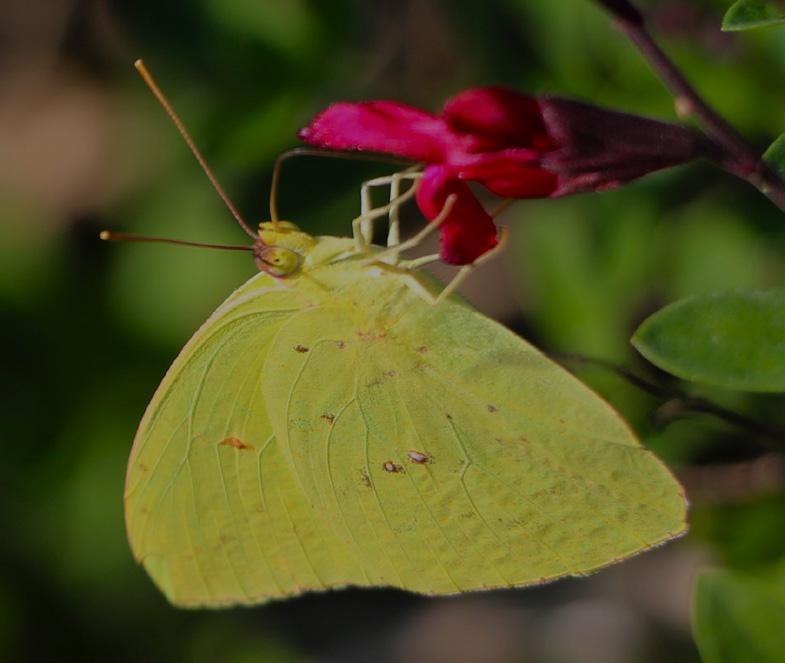

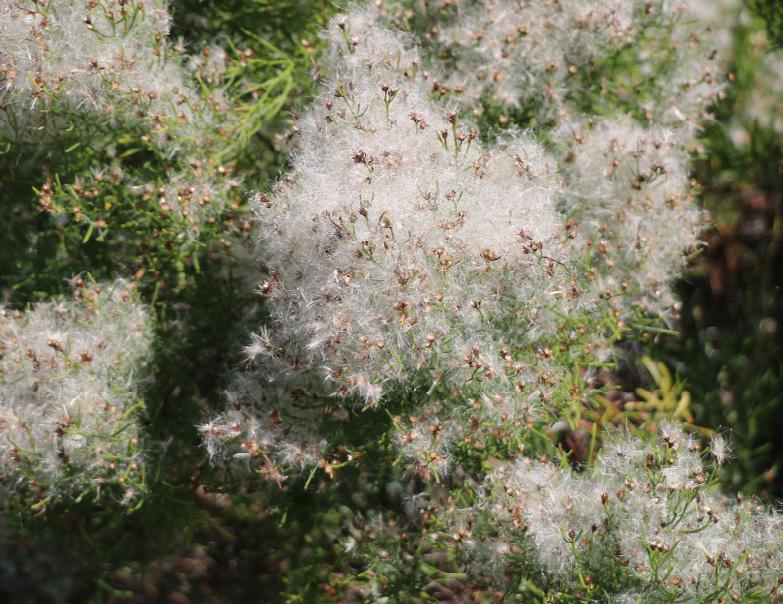

Wetland Science & Practice January 2023 24
Smooth Cordgrass (Spartina alterniflora, now considered Sporobolusalterniflorus by some).
Perennial Salt Marsh Aster (Symphyotrichum tenuifolium).
Lowland Broomsedge (Andropogon glomeratus).
Common Moorhen (Gallinula chloropus).
Gulf Fritillary (Agraulis vanilla). (Note: Its caterpillar feeds on passionflower leaves that contain a poison making the caterpillar lethal to any predator.)
Cloudless Sulphur (Phoebis sennae).
American Coot (Fulica americana).
Saltwater False Willow (Baccharis angustifolia).
Groundsel Bush (Baccharis halimifolia).
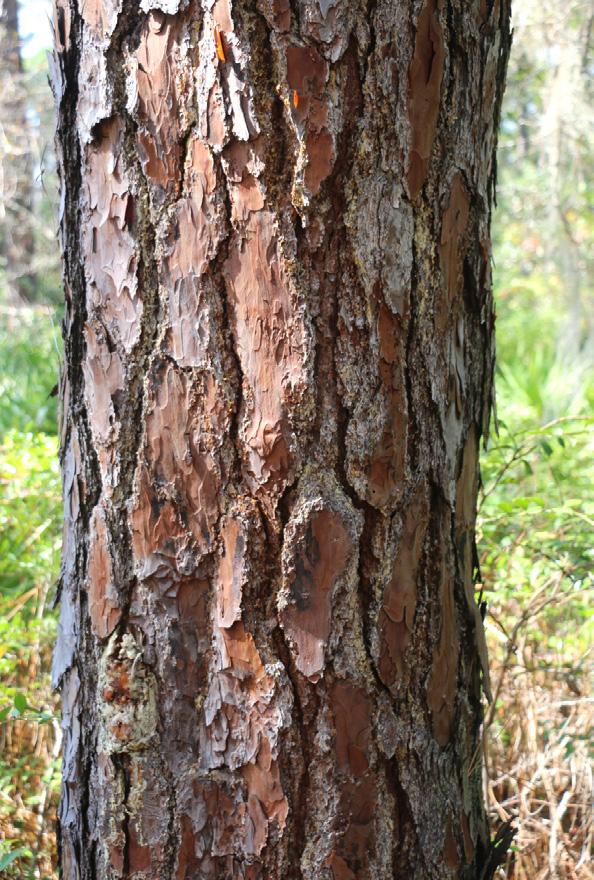

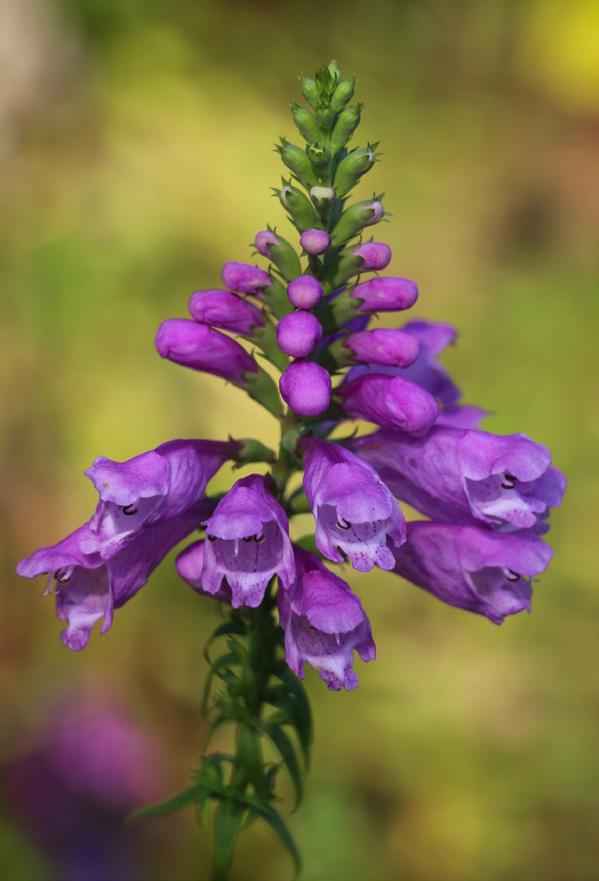
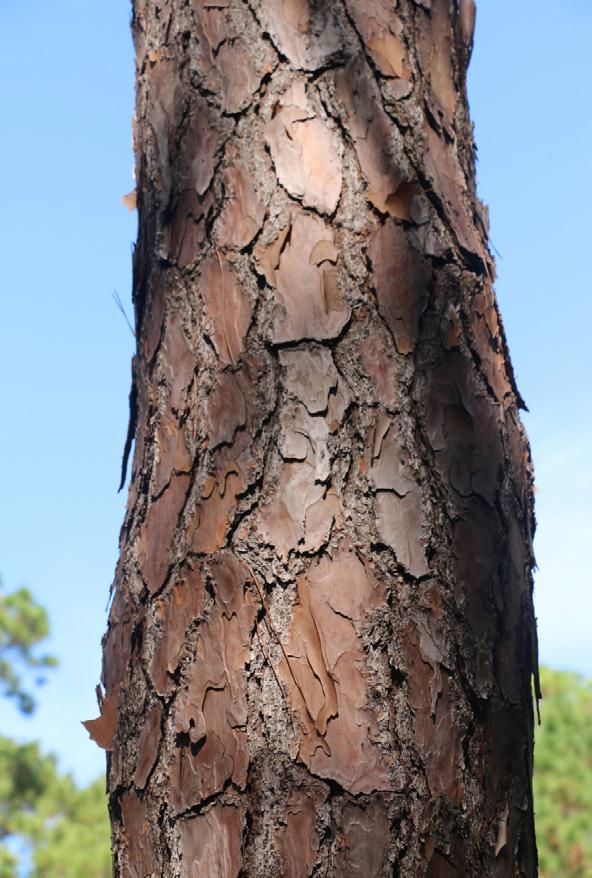
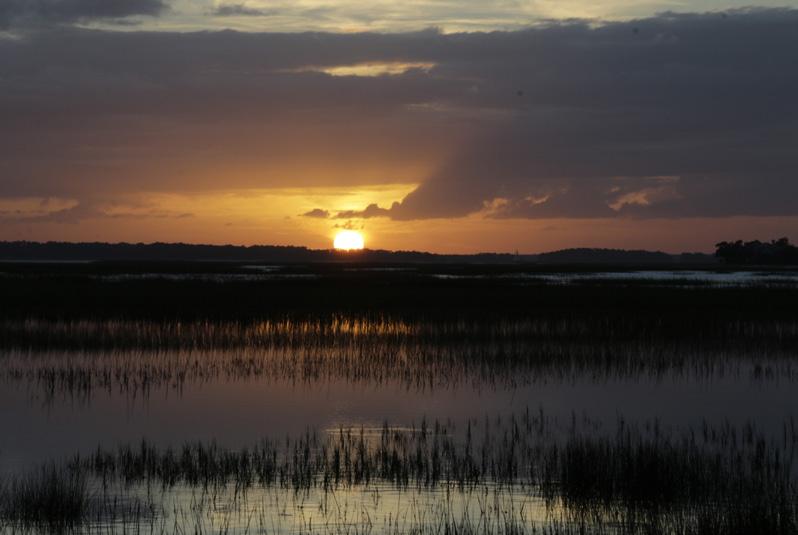
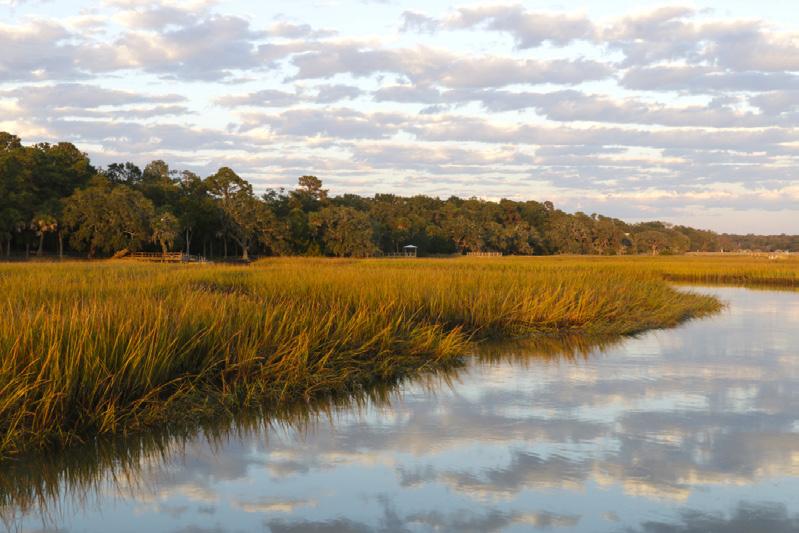
25 Wetland Science & Practice January 2023
AUBUBON NEWHALL PRESERVE, HILTON HEAD ISLAND, SC
MARSH SCENES ON HILTON HEAD ISLAND, SC
Longleaf Pine (Pinus palustris) bark. Slash Pine (Pinus elliottii) bark.
Obedient Plant (Physostegia virginiana).
Sunset over Jarvis Creek salt marsh.
Salt marsh along House Creek just before sunset.
Hooded Pitcher Plant (Sarracenia minor).
EPA and Army Finalize Rule Establishing Definition of WOTUS and Restoring Fundamental Water Protections
WASHINGTON (DECEMBER 30, 2022)–
Today, the U.S. Environmental Protection Agency (EPA) and the U.S. Department of the Army (the agencies) announced a final rule establishing a durable definition of “waters of the United States” (WOTUS) to reduce uncertainty from changing regulatory definitions, protect people’s health, and support economic opportunity. The final rule restores essential water protections that were in place prior to 2015 under the Clean Water Act for traditional navigable waters, the territorial seas, interstate waters, as well as upstream water resources that significantly affect those waters. As a result, this action will strengthen fundamental protections for waters that are sources of drinking water while supporting agriculture, local economies, and downstream communities.
“When Congress passed the Clean Water Act 50 years ago, it recognized that protecting our waters is essential to ensuring healthy communities and a thriving economy,” said EPA Administrator Michael S. Regan. “Following extensive stakeholder engagement, and building on what we’ve learned from previous rules, EPA is working to deliver a durable definition of WOTUS that safeguards our nation’s waters, strengthens economic opportunity, and protects people’s health while providing greater certainty for farmers, ranchers, and landowners.”
“This final rule recognizes the essential role of the nation’s water resources in communities across the nation,” said Assistant Secretary of the Army for Civil Works Michael L. Connor. “The rule’s clear and supportable definition of waters of the United States will allow for more efficient and effective implementation and provide the clarity long desired by farmers, industry, environmental organizations, and other stakeholders.”
This rule establishes a durable definition of “waters of the United States” that is grounded in the authority provided by Congress in the Clean Water Act, the best available science, and extensive implementation experience stewarding the nation’s waters. The rule returns to a reasonable and familiar framework founded on the pre-2015 definition with updates to reflect existing Supreme Court decisions, the latest science, and the agencies’ technical expertise. It establishes limits that appropriately draw the boundary of waters subject to federal protection.
The final rule restores fundamental protections so that the nation will be closer to achieving Congress’ goal in the Clean Water Act that American waters be fishable and
swimmable, and above all, protective of public health. It will also ensure that the nation’s waters support recreation, wildlife, and agricultural activity, which is fundamental to the American economy. The final rule will cover those waters that Congress fundamentally sought to protect in the Clean Water Act—traditional navigable waters, the territorial seas, interstate waters, as well as upstream water resources that significantly affect those waters.
More information, including a pre-publication version of the Federal Register notice and fact sheets, is available at EPA’s “Waters of the United States” website.
Accompanying the issuance of the final rule, the agencies are also releasing several resources to support clear and effective implementation in communities across America. Today, a summary of 10 regional roundtables was released that synthesizes key actions the agencies will take to enhance and improve implementation of “waters of the United States.” These actions were recommendations provided during the 10 regional roundtables where the agencies heard directly from communities on what is working well from an implementation perspective and where there are opportunities for improvement. The roundtables focused on the geographic similarities and differences across regions and provided site specific feedback about the way the scope of “waters of the United States” has been implemented by the agencies.
Today, the agencies are also taking action to improve federal coordination in the ongoing implementation of “waters of the United States.” First, EPA and Army are issuing a joint coordination memo to ensure the accuracy and consistency of jurisdictional determinations under this final rule. Second, the agencies are issuing a memo with U.S. Department of Agriculture to provide clarity on the agencies’ programs under the Clean Water Act and Food Security Act.
BACKGROUND
The Clean Water Act prohibits the discharge of pollutants from a point source into “navigable waters” unless otherwise authorized under the Act. “Navigable waters” are defined in the Act as “the waters of the United States, including the territorial seas.” Thus, “waters of the United States” is a threshold term establishing the geographic scope of federal jurisdiction under the Clean Water Act. The term “waters of the United States” is not defined by the Act but has been defined by the agencies in regulations since the 1970s and jointly implemented in the agencies’ respective programmatic activities. For further information: press@epa.gov
Wetland Science & Practice January 2023 26 WETLAND PRACTICE
Listed below are some links to some random news articles that may be of interest. Links from past issues can beaccessed on the SWS website news page. This section includes links to mostly newspaper articles that may be of interest. Members are encouraged to send links to articles about wetlands in their local area. Please send the links to WSP Editor at ralphtiner83@gmail.com and reference “Wetlands in the News” in the subject box. Thanks for your cooperation.
For another source on the latest news about wetlands and related topics, readers are referred to the National Association of Wetland Managers website (formerly the Association of State Wetland Managers). Their “Wetland News Digest” includes links to government agency public notices and newspaper articles that should be of interest, especially dealing with wetland regulations, court cases, management, and threats: https://www.nawm.org/publications/wetland-news-digest.
Montana Conservation Easement at Risk Development and mangrove conservation can go hand in hand. A new Gujarat study offers proof Recovering biodiversity in Brazil's pioneering Atlantic Forest through conservation and ecological restoration
The planetary role of seagrass conservation Burntwood-Langenkamp Wetland Conservation project
Plans for Somerset wetlands to mitigate phosphate levels
Hundreds of endangered northern leopard frogs to be released in Grant County wildlife refuge
Georgia just broke its state record for the number of sea turtle nests 99% of sea turtles are now born female due to extreme heatwaves
In effort to improve water quality, state to revamp wetlands at Woodlawn Beach
California Fire and Floods Turn a River to 'Sludge,' Killing Thousands of Fish Tribe: Flash flood during McKinney Fire kills thousands of Klamath River fish Earth’s Lakes Emit Less Methane Than Previously Thought The Shapes of Shrimp Farms Affect Their Groundwater Pollution
Poseidon failed to start wetlands restoration on time, says Coastal Commission
Every Baby Sea Turtle in Florida Seems to Be Female. We Warned You, Scientists Say Feathered jewels on a spinning chandelier: White pelicans have made an astonishing recovery in Wisconsin Where are the pelicans, and will they return to the Mississippi Coast this summer?
Iraq's Garden of Eden now 'like a desert'
Why scientists have pumped a potent greenhouse gas into streams on public lands
Sea creatures pollinate marine plants and algae, surprising scientists
'Bay City deserves it': Restoration project paves way for Wisconsin village to regain access to Lake Pepin
Evidence of Unprecedented Modern Sea-Level Rise Found in Ancient Caves
Everglades: The Devil's Garden Dam removal aimed at restoring stream flow, improving water quality
A 33-acre wetland project at FDR Park will break ground soon
Century-old Tomales Bay oyster farm sanctioned by coastal commission
U.S. Fish and Wildlife Service seeks to protect southeastern N.C. species, efforts aimed at Brunswick, New Hanover counties
What’s the Best Mosquito Repellent? We Tested Sprays, Nets, and Tech to Find Out Walking RI: Discover a hidden gem of forest, ponds and wetlands in Little Compton
On Chile rivers, Native spirituality and development clash Flooding Wetlands Could Be the Next Big Carbon Capture Hack
Drone photos show ‘incredible’ impact of beavers during drought Ballston Beaver Pond might become Ballston Wetland Park since there are no more beavers Work begins on new Herefordshire wetland habitat Dugongs functionally extinct in Chinese waters, study finds WION Climate Tracker | Sea level rise threatens land & livelihood in Spain's Ebro Delta
Tiny oysters play big role in stabilizing eroding shorelines Birds losing habitat in the Netherlands due to rising sea levels
Swinomish Tribe builds modern clam garden, reviving practice
CNN Exclusive: Scientists make major breakthrough in race to save Caribbean coral Drifting Toward Disaster: the (Second) Rio Grande EPA’s authority over wetlands is at stake as justices wade back into regulatory morass Northland peat bogs are carbon hogs, if they are intact
27 Wetland Science & Practice January 2023
THE NEWS
WETLANDS IN
WETLAND BOOKSHELF
Listed below are some wetland books that have come to our attention over the years. Please help us add new books and major reports to this listing. If your agency, organization, or institution has published new publications on wetlands, please send the information to Editor of Wetland Science & Practice at ralphtiner83@gmail.com. Your cooperation is appreciated.
BOOKS
• History of Wetland Science: A Perspective from Wetland Leaders
• An Introduction to the Aquatic Insects of North America (5th Edition)
• Wading Right In: Discovering the Nature of Wetlands
• Sedges of Maine
• Sedges and Rushes of Minnesota
• Wetland & Stream Rapid Assessments: Development,Validation, and Application
• Eager: The Surprising Secret Life of Beavers and Why They Matter
• Wetland Indicators – A Guide to Wetland Formation, Identification, Delineation, Classification, and Mapping
• Wetland Soils: Genesis, Hydrology, Landscapes, and Classification


• Creating and Restoring Wetlands: From Theory to Practice
• Salt Marsh Secrets. Who uncovered them and how?
• Remote Sensing of Wetlands: Applications and Advances.
SWS JOURNAL
What's New in the SWS Journal- WETLANDS?
• Wetlands (5th Edition).
• Black Swan Lake – Life of a Wetland
• Coastal Wetlands of the World: Geology, Ecology, Distributionand Applications
• Florida’s Wetlands
• Mid-Atlantic Freshwater Wetlands: Science, Management,Policy, and Practice
• The Atchafalaya River Basin: History and Ecology of an American Wetland
• Tidal Wetlands Primer: An Introduction to their Ecology, Natural History, Status and Conservation
• Wetland Landscape Characterization: Practical Tools, Methods, and Approaches for Landscape Ecology
• Wetland Techniques (3 volumes)
• Wildflowers and Other Plants of Iowa Wetlands
• Wetland Restoration: A Handbook for New Zealand Freshwater Systems
• Wetland Ecosystems
• Constructed Wetlands and Sustainable Development
• Tussock Sedge: A Wetland Superplant
• Waubesa Wetlands: New Look at an Old Gem
The following articles appear in Volume 42, issue 8 of WETLANDS, journal for the Society of Wetland Scientists.
Predictors of Calcareous Fen Floristic Quality in a Rapidly Urbanizing County Intraspecific Functional Variability and Functional Changes Along Environmental Gradients Associated to Mangrove Forest Zonation in West-Central Mexico Vegetation Dynamics on a Restored salt Marsh Mosaic: a Re-Visitation Study in a Coastal Wetland in Central Italy
The Evolution of Blue Carbon Science Long-Term Carbon Accumulation in Temperate Swamp Soils: a Case Study from Greenock Swamp, Ontario, Canada Benefits of Blue Carbon Stocks in a Coastal Jazan Ecosystem Undergoing Land Use Change
Ecosystem Service of Tropical Flooded Forests and its Relation to Characteristics of Local Communities Cattle Grazing of a Celtic Sea Saltmarsh Affects Invertebrate Community Composition and Biomass, but not Diversity Drones and Bathymetry Show the Importance of Optimal Water Depth for Nest Placement Within Breeding Colonies of Western and Clark’s Grebes
Wetland Science & Practice January 2023 28
WSP SUBMISSION GUIDELINES
About Wetland Science & Practice (WSP)
Wetland Science and Practice (WSP) is the SWS quarterly publication aimed at providing information on select SWS activities (technical committee summaries, chapter workshop overview/abstracts, and SWS-funded student activities), articles on ongoing or recently completed wetland research, restoration, or management projects, freelance articles on the general ecology and natural history of wetlands, and highlights of current events. The July issue is typically dedicated to publishing the proceedings of our annual conference. WSP also serves as an outlet for commentaries, perspectives and opinions on important developments in wetland science, theory, management and policy. Both invited and unsolicited manuscripts are reviewed by the WSP editor for suitability for publication. When deemed necessary or upon request, some articles are subject to scientific peer review. Student papers are welcomed. Please see publication guidelines herein. Electronic access to Wetland Science and Practice is included in your SWS membership. All issues published, except the current issue, are available via the internet to the general public. The current issue is only available to SWS members; it will be available to the public four months after its publication when the next issue is released (e.g., the January 2022 issue will be an open access issue in April 2022). WSP is an excellent choice to convey the results of your projects or interest in wetlands to others. Also note that as of January 2021, WSP will publish advertisements, contact info@sws. org for details.
HOW YOU CAN HELP
If you read something you like in WSP, or that you think someone else would find interesting, be sure to share. Share links to your Facebook, Twitter, Instagram and LinkedIn accounts.
Make sure that all your SWS colleagues are checking out our recent issues, and help spread the word about SWS to non-members!
Questions? Contact editor Ralph Tiner, PWS Emeritus (ralphtiner83@gmail.com).
For guidance on submitting tributes to deceased wetland scientists for publication in WSP click here.
WSP Manuscript – General Guidelines
LENGTH:
Approximately 5,000 words; can be longer if necessary.
STYLE:
See existing articles from 2014 to more recent years available online at: https://members.sws.org/wetland-science-and-practice
TEXT:
Word document, 12 font, Times New Roman, singlespaced; keep tables and figures separate, although captions can be included in text. For reference citations in text use this format: (Smith 2016; Jones and Whithead 2014; Peterson et al. 2010).
FIGURES:
Please include full-color images of subject wetland(s). Image size should be a minimum of 1MB for this e-publication. High resolution images at 150 DPI are preferred. Figures should be original (not published elsewhere) or in the public domain. If published elsewhere, permission must be granted (author’s responsibility) from that publisher.
Reference Citation Examples
• Claus, S., S. Imgraben, K. Brennan, A. Carthey, B. Daly, R. Blakey, E. Turak, and N. Saintilan. 2011. Assessing the ex-tent and condition of wetlands in NSW: Supporting report A – Conceptual framework, Monitoring, evaluation and re-porting program, Technical report series, Office of Environ-ment and Heritage, Sydney, Australia. OEH 2011/0727.
• Clements, F.E. 1916. Plant Succession: An Analysis of the Development of Vegetation. Carnegie Institution of Wash-ington. Washington D.C. Publication 242.
• Colburn, E.A. 2004. Vernal Pools: Natural History and Conservation. McDonald & Woodward Publishing Company, Blacksburg, VA.
• Cole, C.A. and R.P. Brooks. 2000. Patterns of wetland hydrology in the Ridge and Valley Province, Pennsylvania, USA. Wetlands 20: 438-447.
Although not included in the above examples, please be sure to add the doi code to citations where possible.
29 Wetland Science & Practice January 2023
2023 Advertising Prospectus
Monthly Newsletter
The SWS monthly newsletter is sent to approximately 3,000 members around the world, and enjoys an open rate between 40-50%, which is well above industry average. Place your organization in front of leading environmental scientists monthly with an ad that links to your website. 1x 3x 6x 12x $100 $90 ($270 total) $80 ($480 total) $70 ($840 total)
Price (per ad)
• Ad Format: .jpeg or .png
• Ad Due Date: Artwork and link URL due on the first of the month in which the ad is to run.
Website
• Size Specifications: 300 pixels wide x 250 pixels tall, 72 dpi
• Distribution Date: On or around the 15th of each month
The SWS website boasts nearly 200 daily visitors annually and is a user-friendly, engaging, and SEO optimized format. By purchasing ad space on sws.org, you will increase the visibility of your product or service directly to our audience of wetland professionals, academics, and other science-based fields that will benefit the most from what your company has to offer.
Quarter 1 Quarter 2 Quarter 3 Quarter 4
Ad Due Date January 2 March 27 June 26 Sept 25 Ad Begins January 9 April 3 June 30 October 2
• Pricing: $300 quarterly; $1,000 yearly

• Ad Format: .jpeg or .png
• Size Specification: .300 pixels wide x 250 pixels tall, 72 dpi
Wetland Science & Practice (WSP)

• Ad Due Date: Artwork and link URL due one week prior to beginning run date
• Ad Begin Date: Ad uploaded the first day of the first month of the quarter
WSP is the SWS quarterly publication aimed at providing information on select SWS activities (technical committee summaries, chapter and section workshop overview/abstracts, and SWS-funded student activities); brief summary articles on current or recently completed wetland research, restoration, or management projects; information on the general ecology and natural history of wetlands; and highlights of current events. It is distributed digitally, with over 2,000 impressions and more than 300 reads in the first six months after release.
• Ad Format: Press quality .pdf with images rendered at 300 or higher dpi
• Ad Due Date: Artwork is due on the 15th of the month prior to the month of publication
• Distribution Date: WSP is published on or around the middle of the month of publication
Wetland Science & Practice January 2023
Pricing and Print Specifications 1x 2x 3x 4x Full page (7.5” x 10” tall) $275 $250 $225 $200 Half page (7.5” x 4.625” tall) $175 $160 $145 $130 Quarter page
x 4.625” tall) $120 $110 $100 $90
(3.625 ”
January issue April issue July issue October issue Ad Due Date December 15 March 15 June 15 September 15 Issue Published January 3 April 3 July 5 October 4 Interested in targeted exposure to SWS members? Contact info@sws.org | www.sws.org
Guaitipan Wetland located in Huila Colombia - Photographed on November 2020 by Lorena Chavarro Chaux












 Szafranski,
Szafranski,






















 By Ralph Tiner
By Ralph Tiner
































